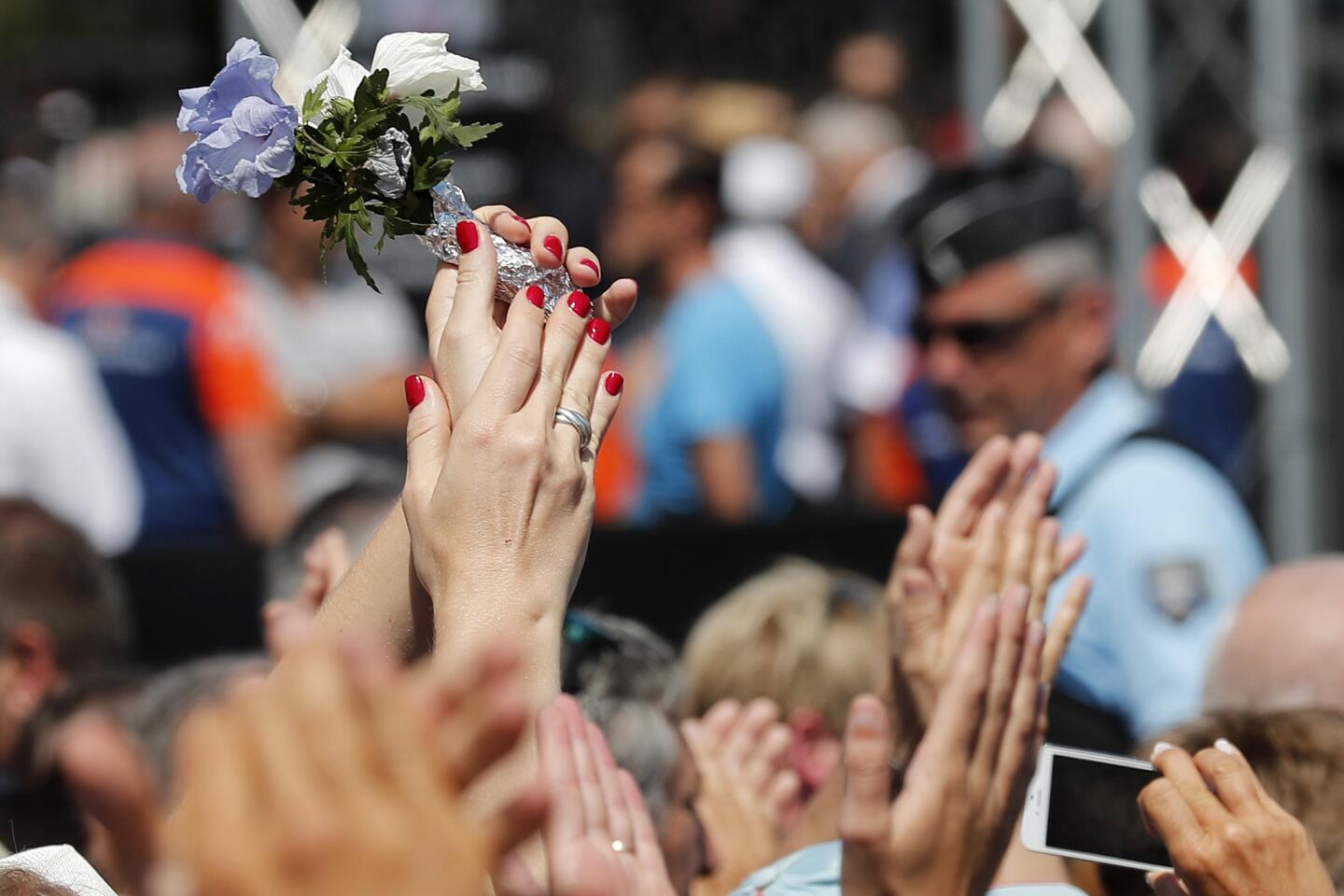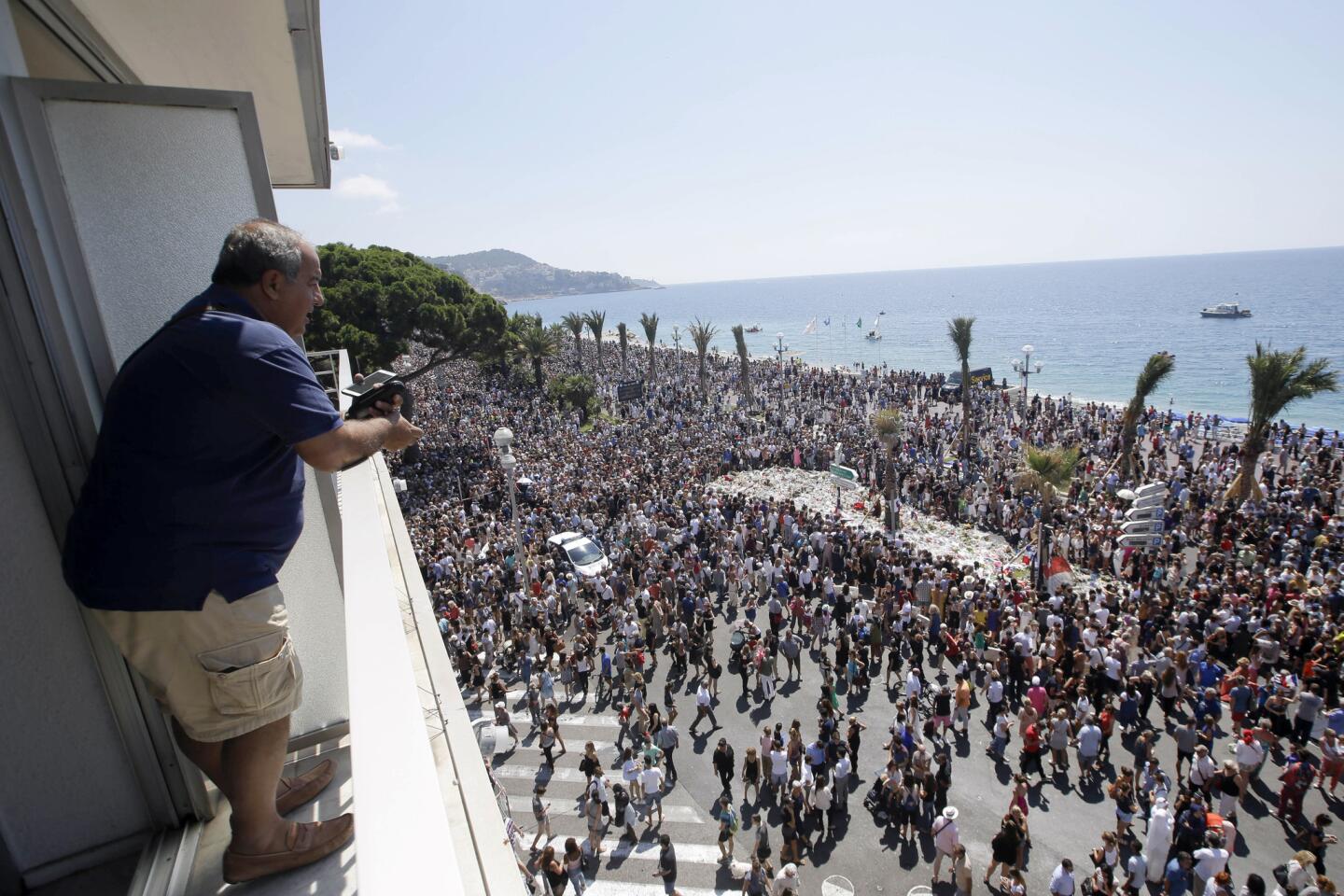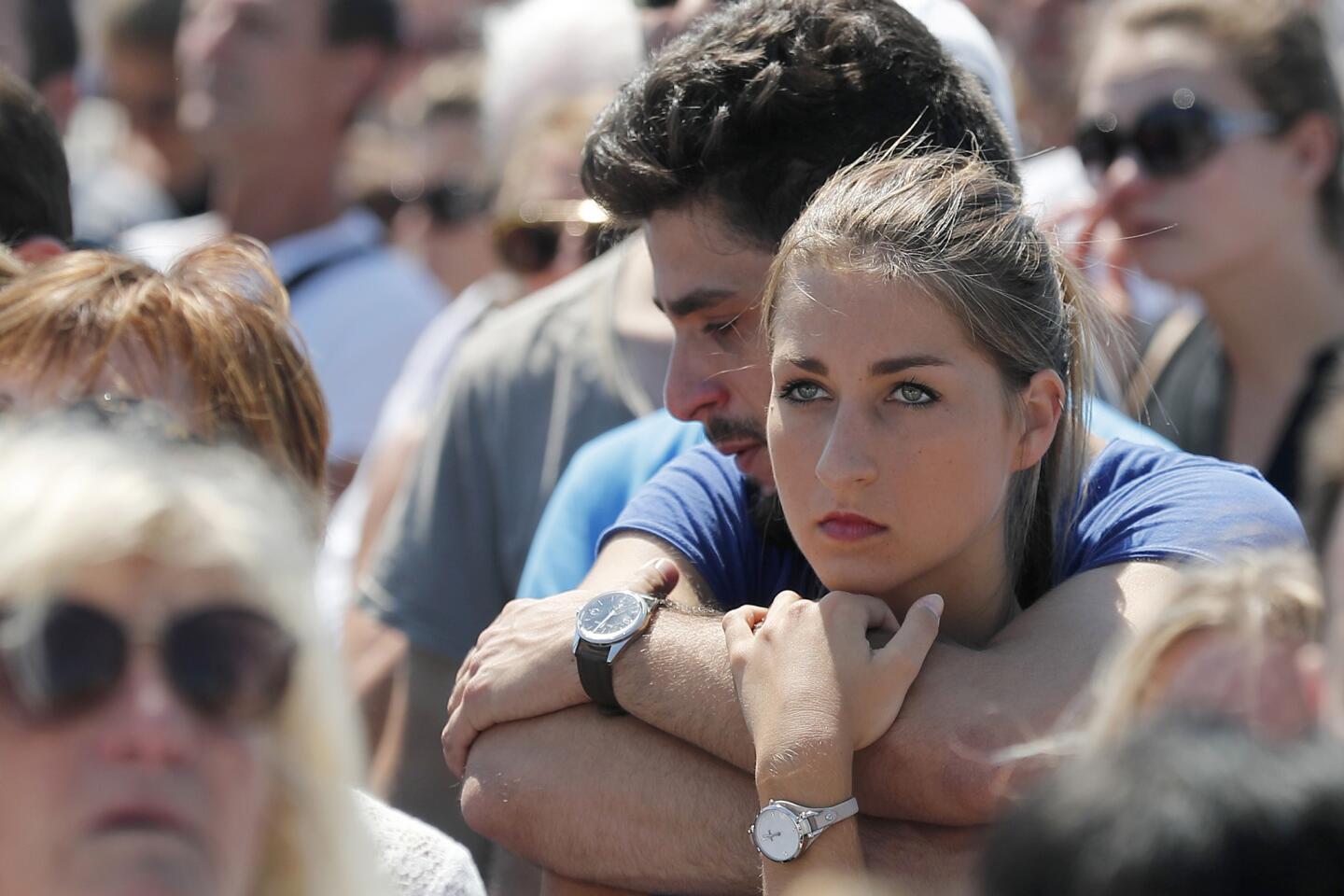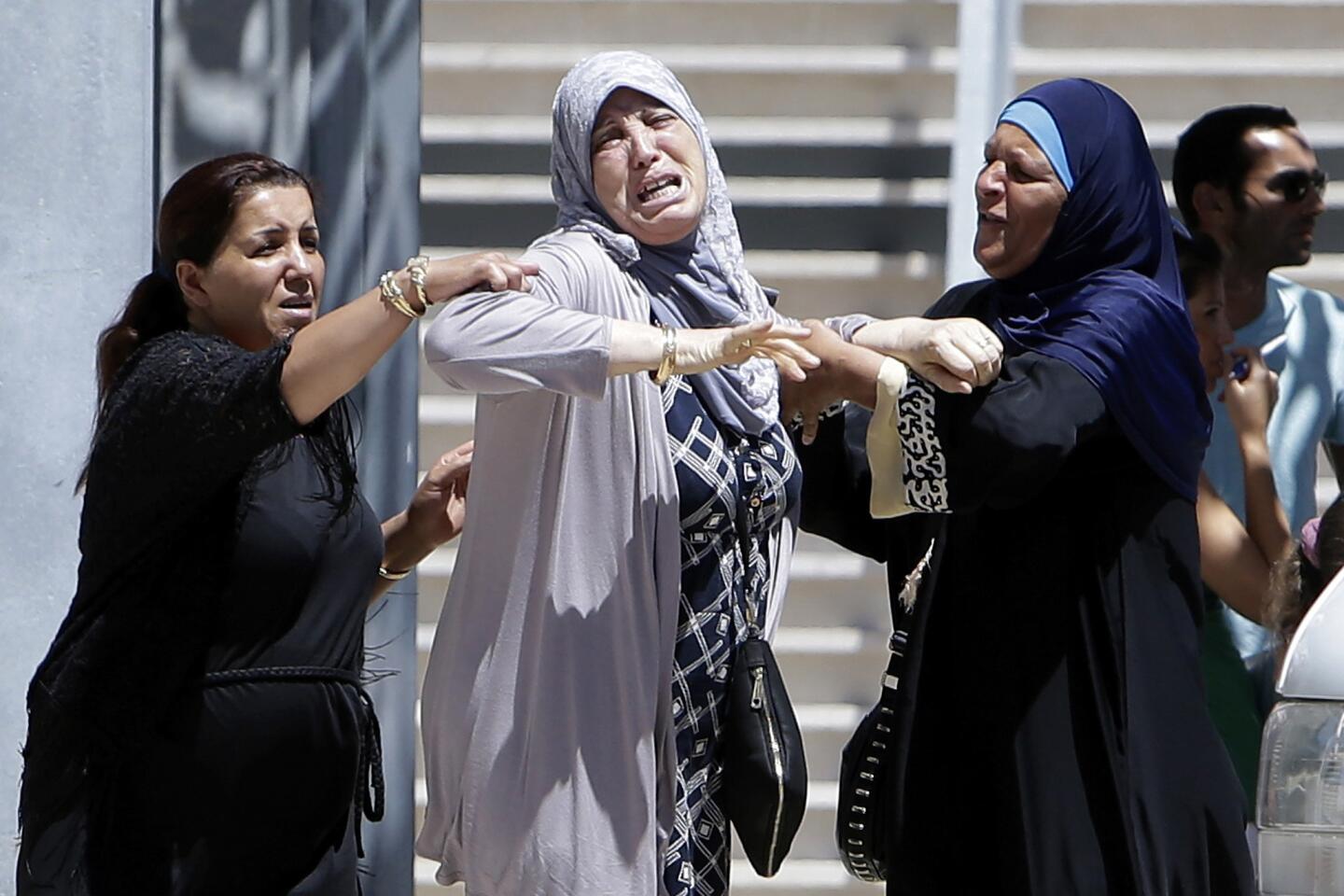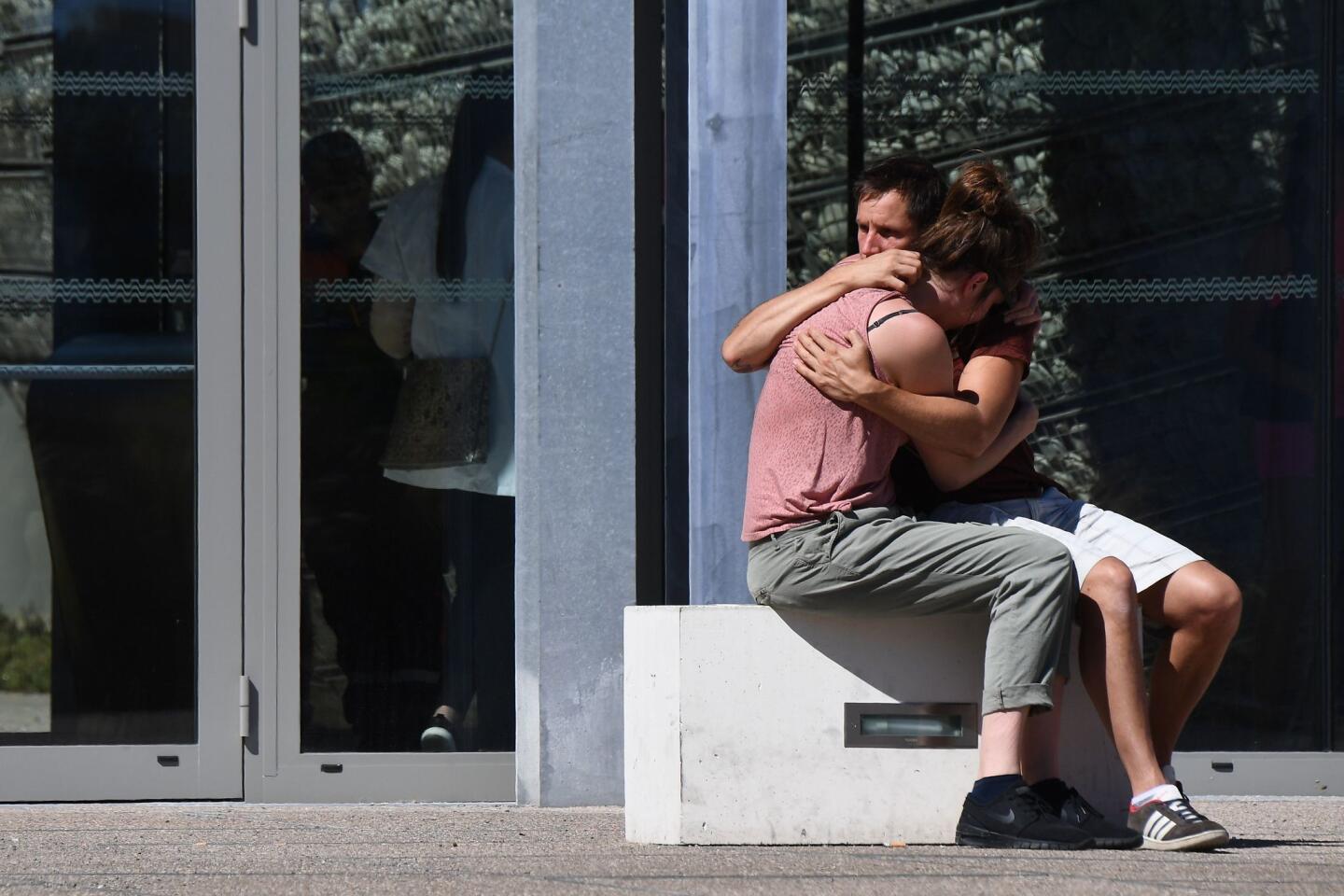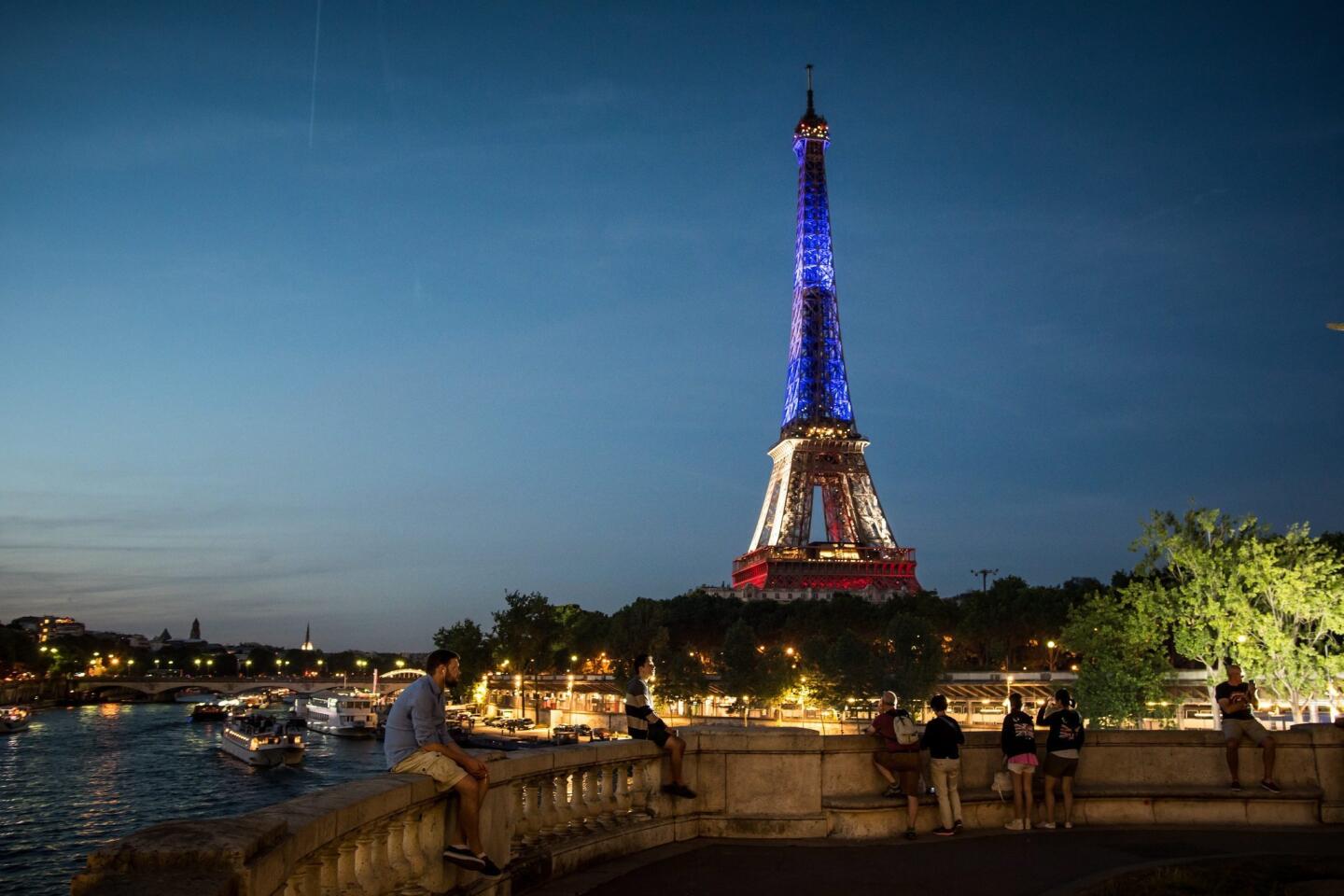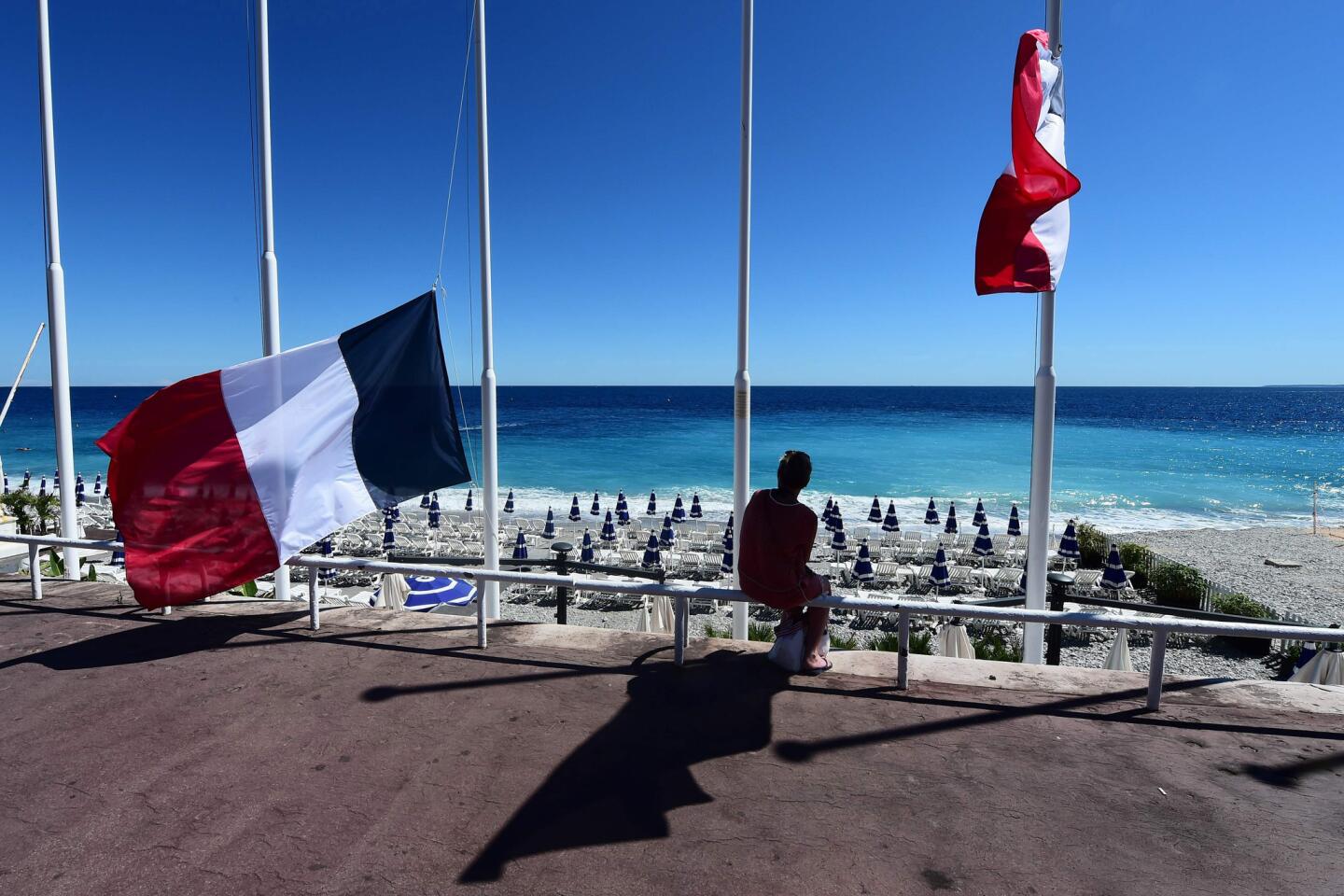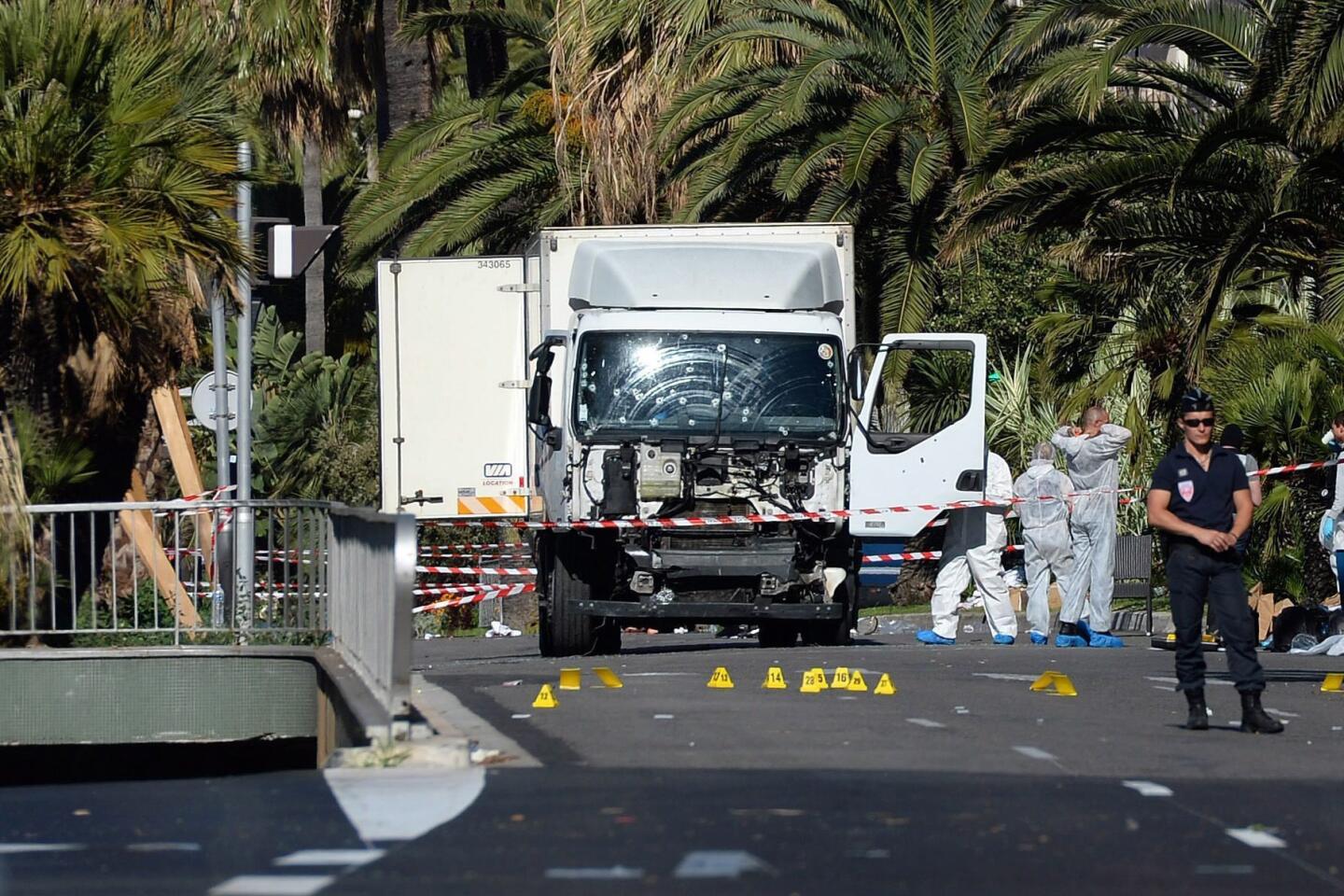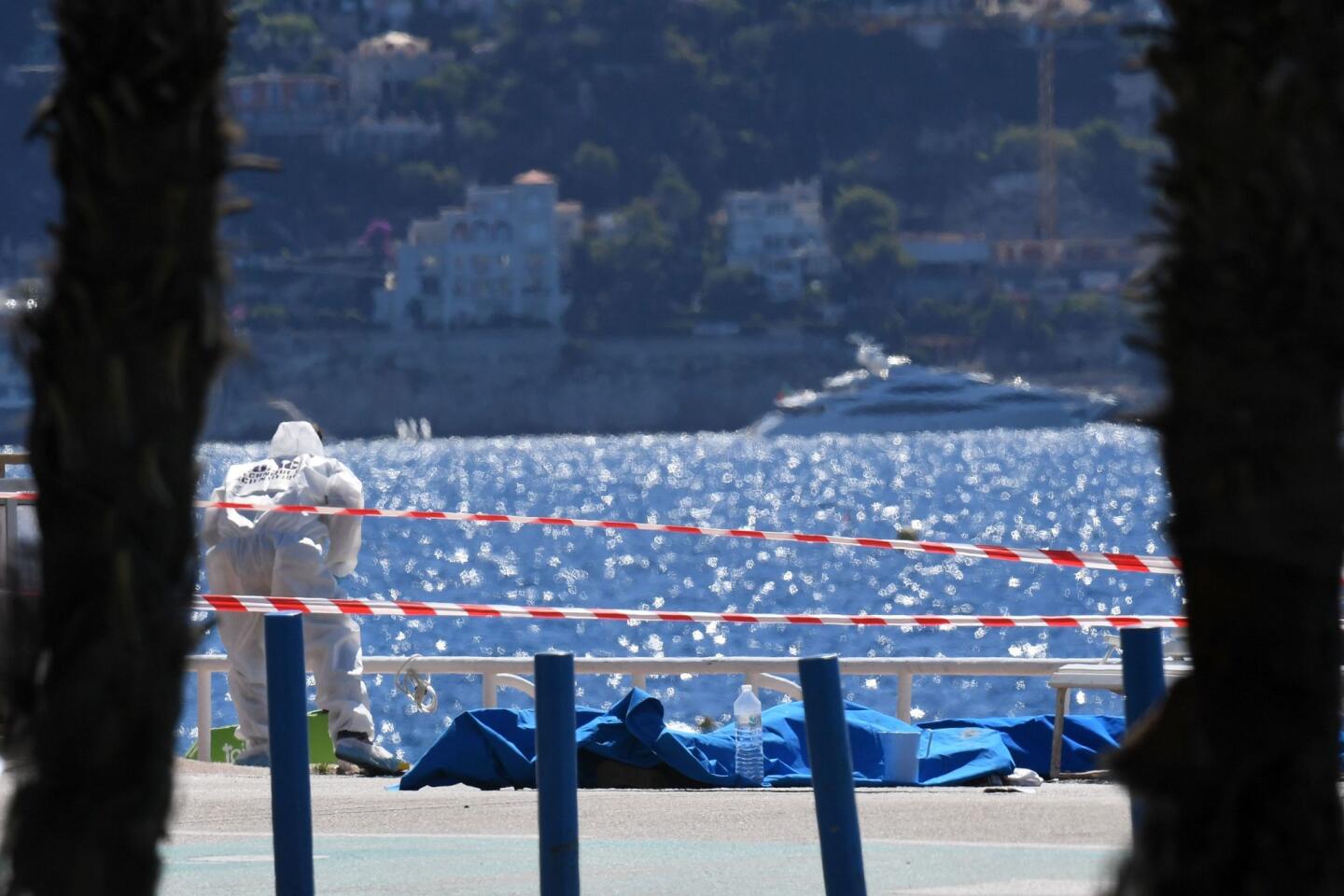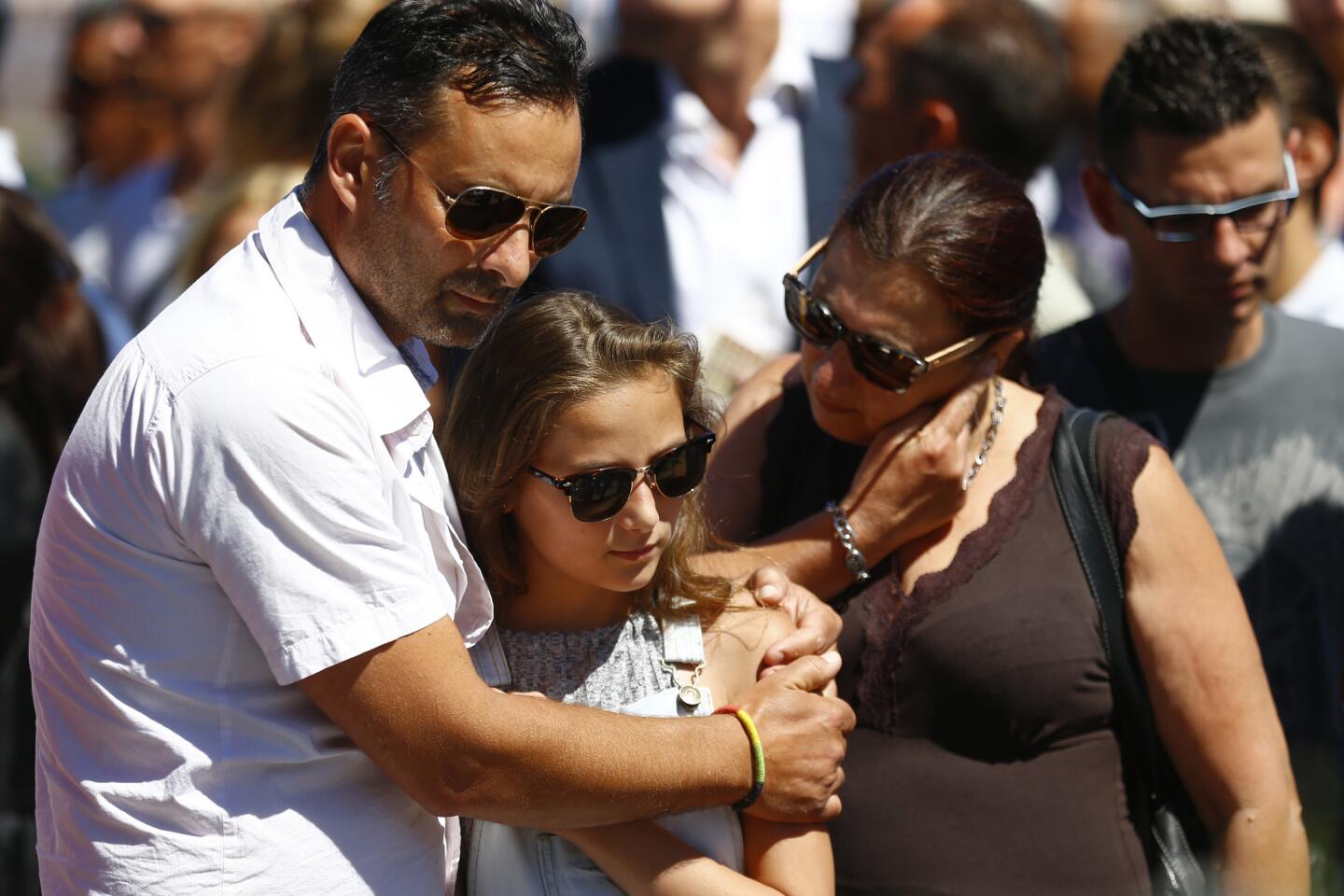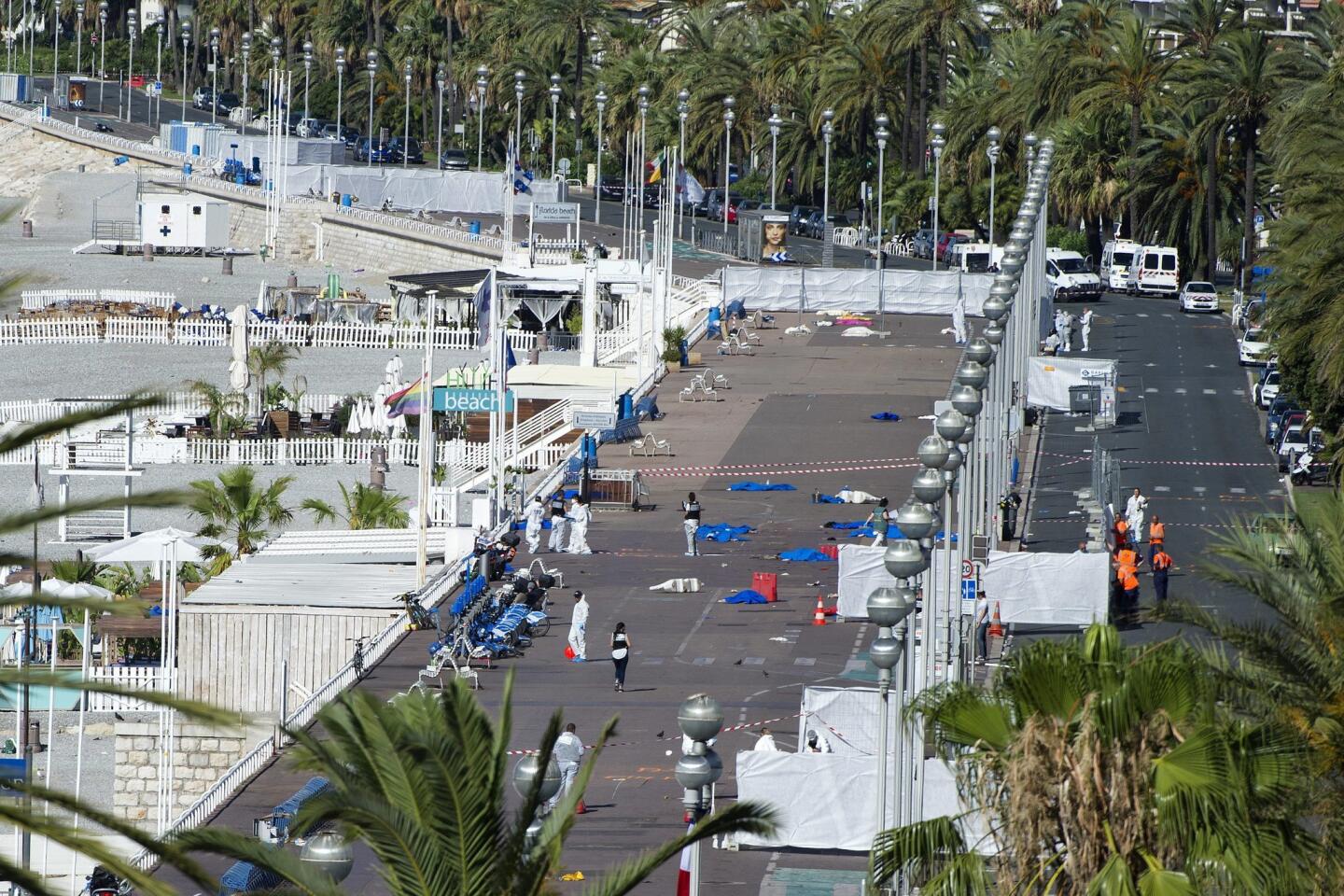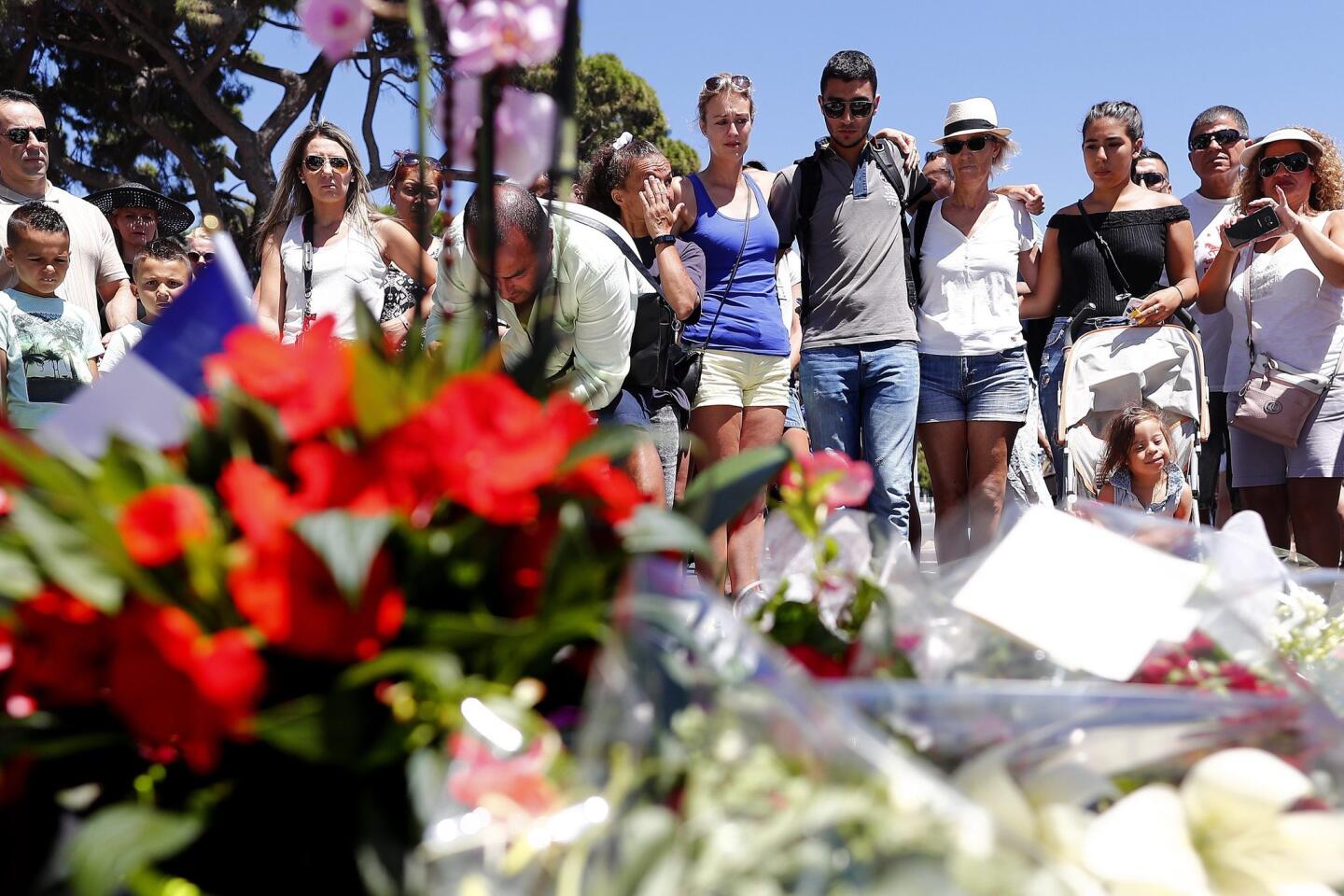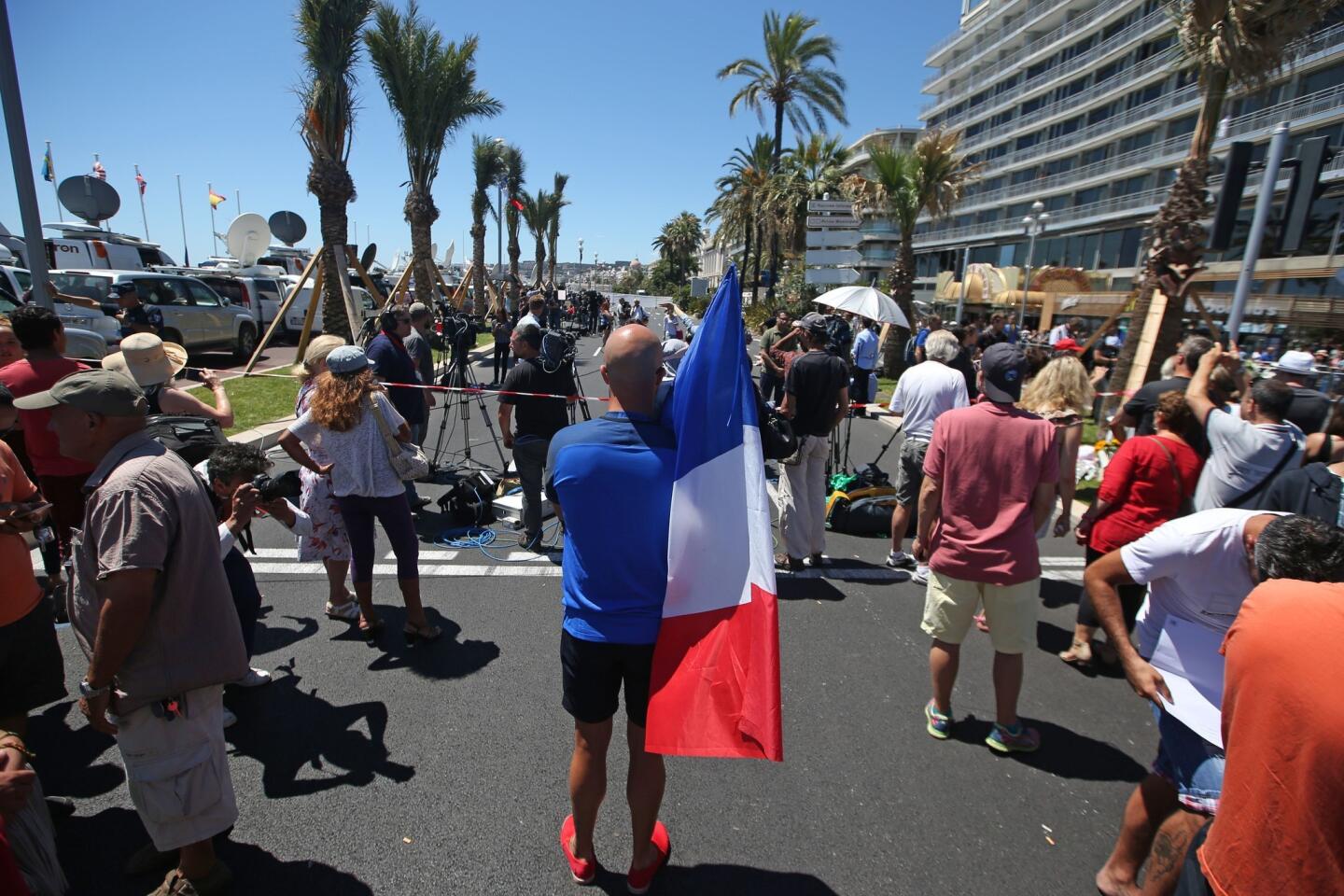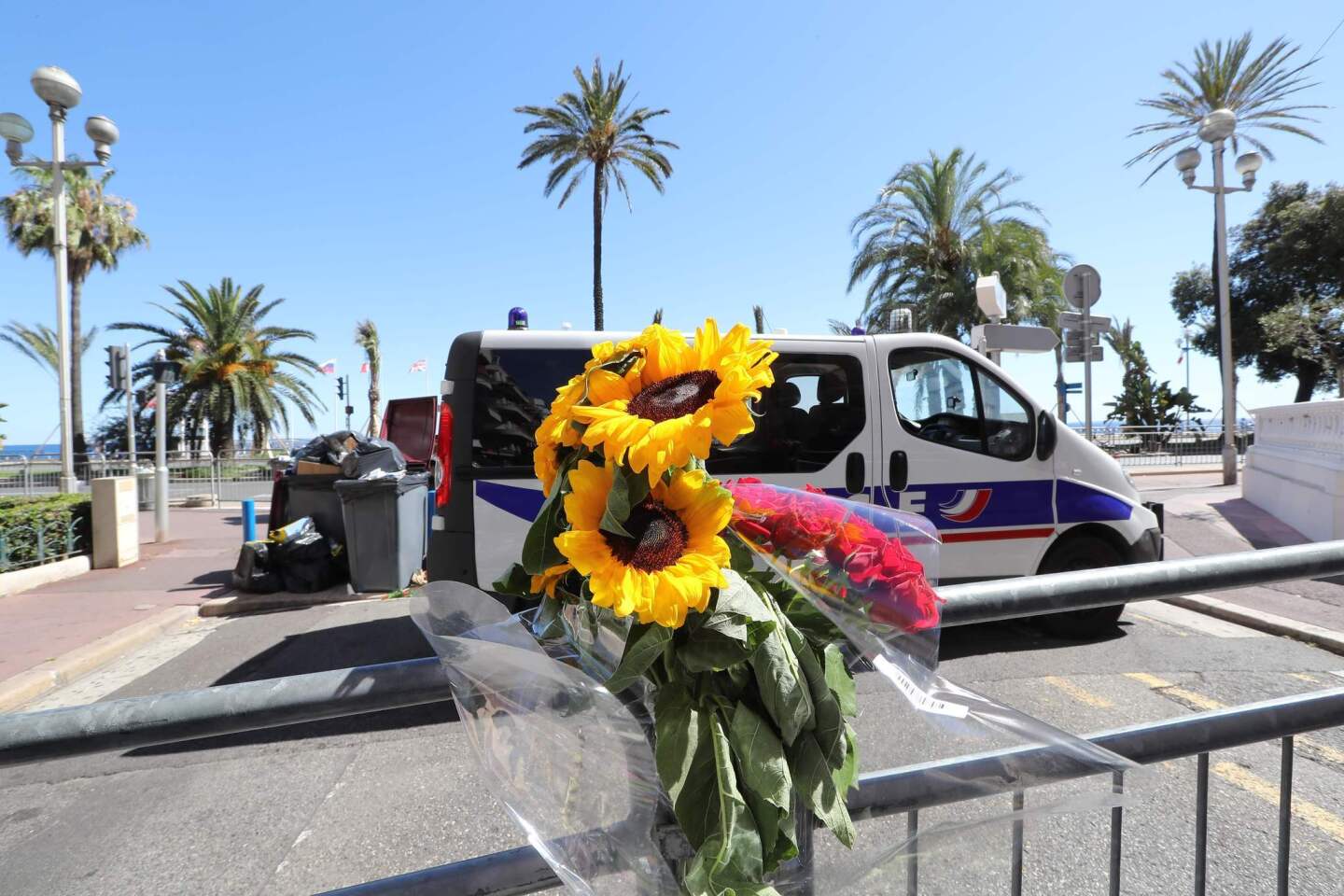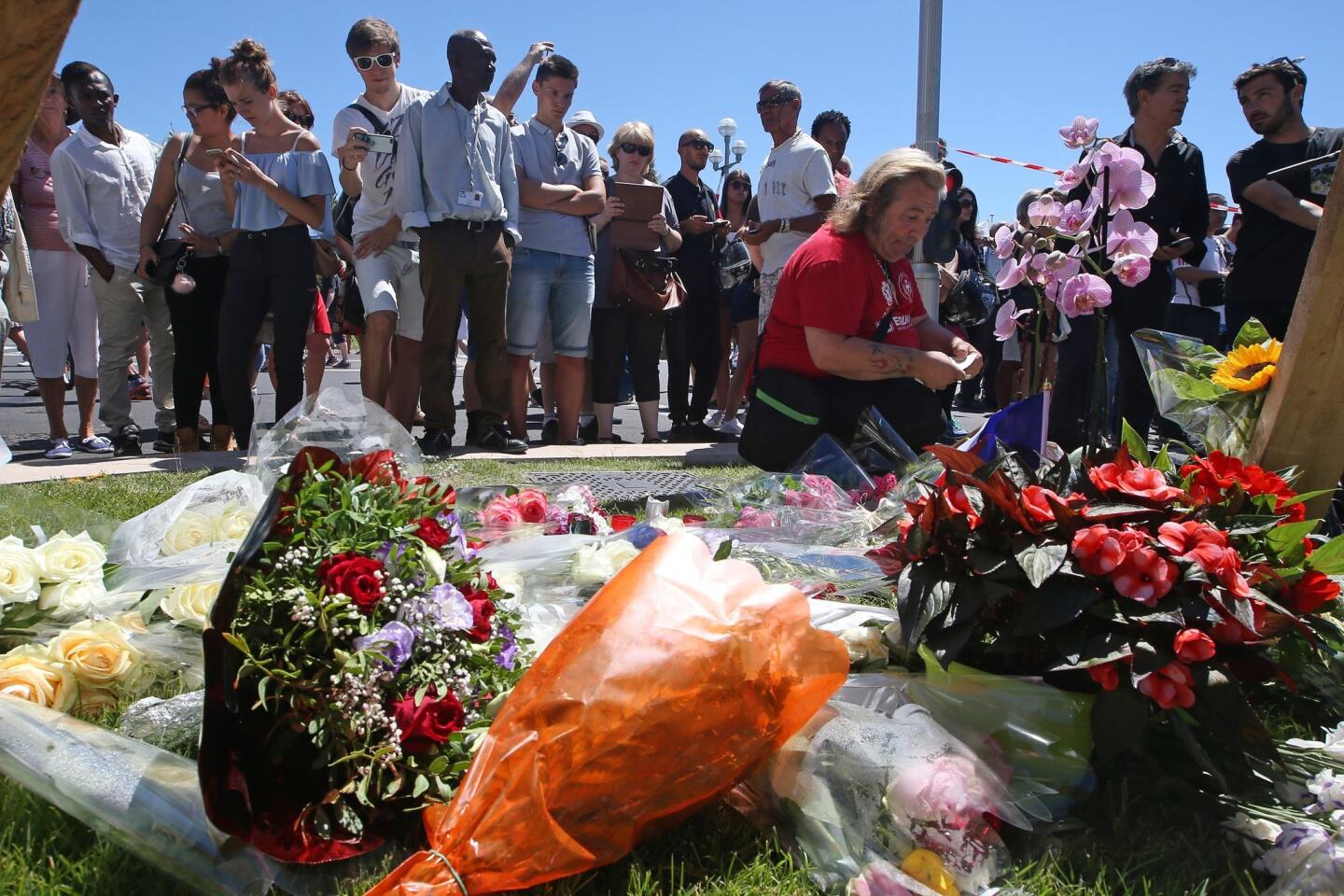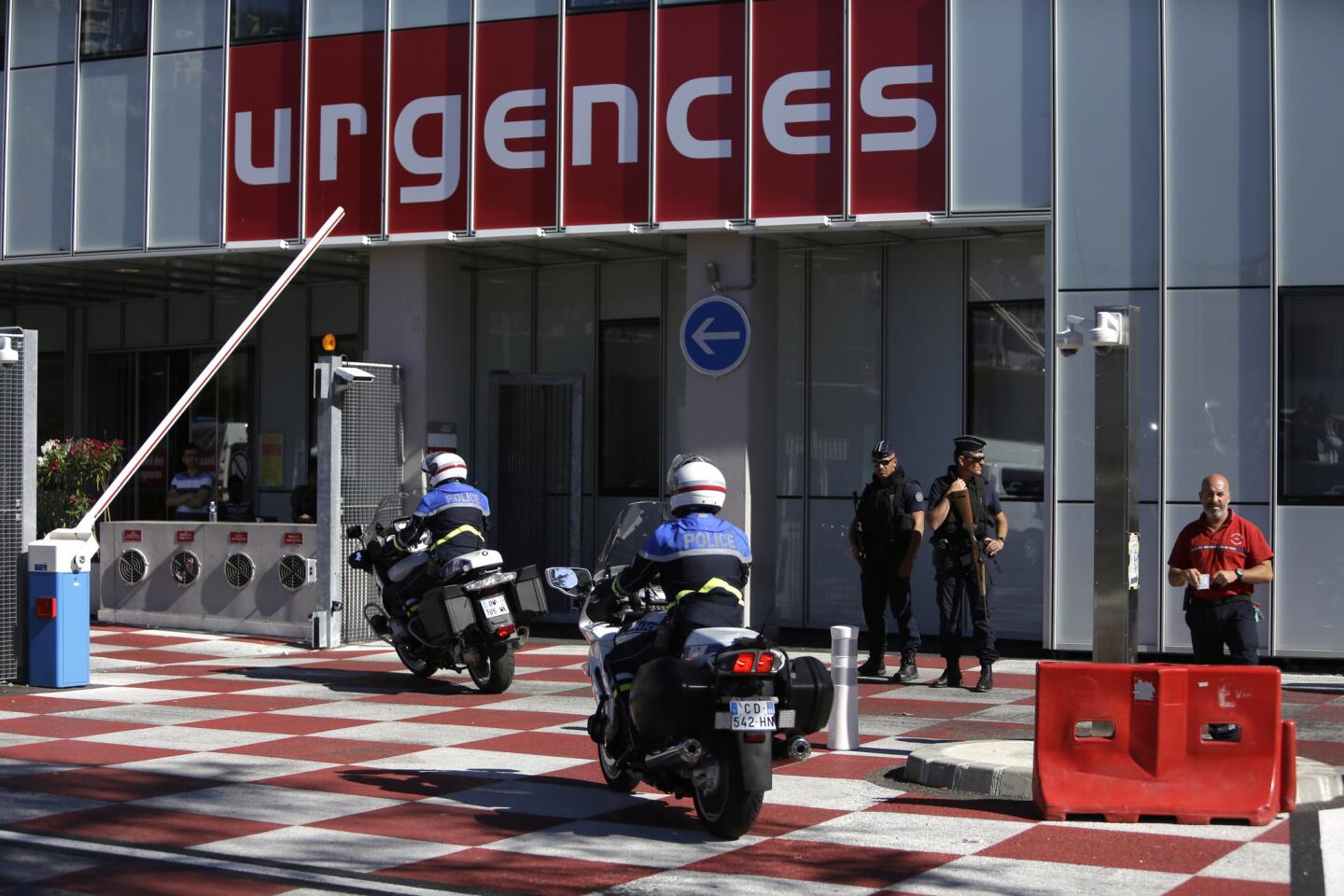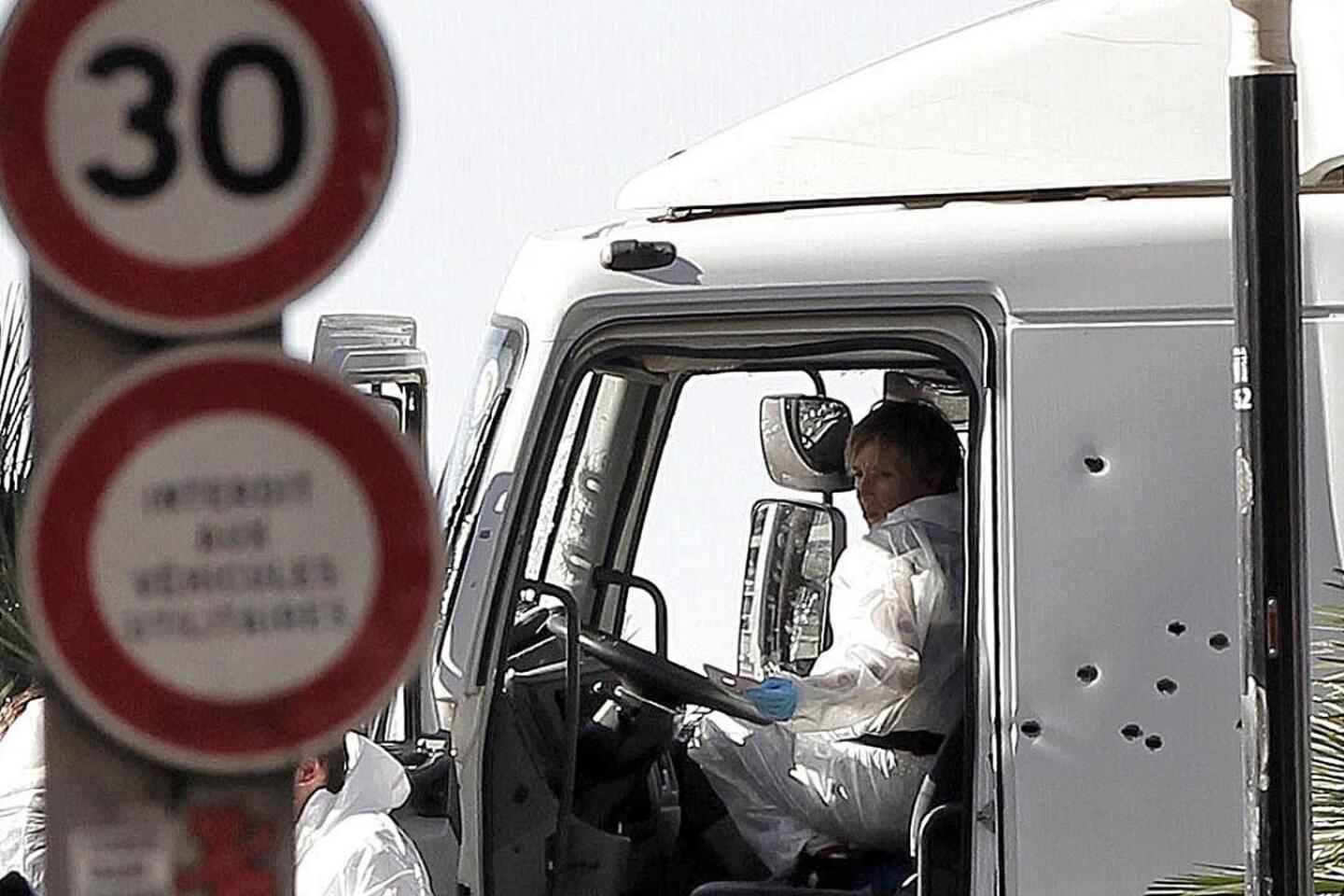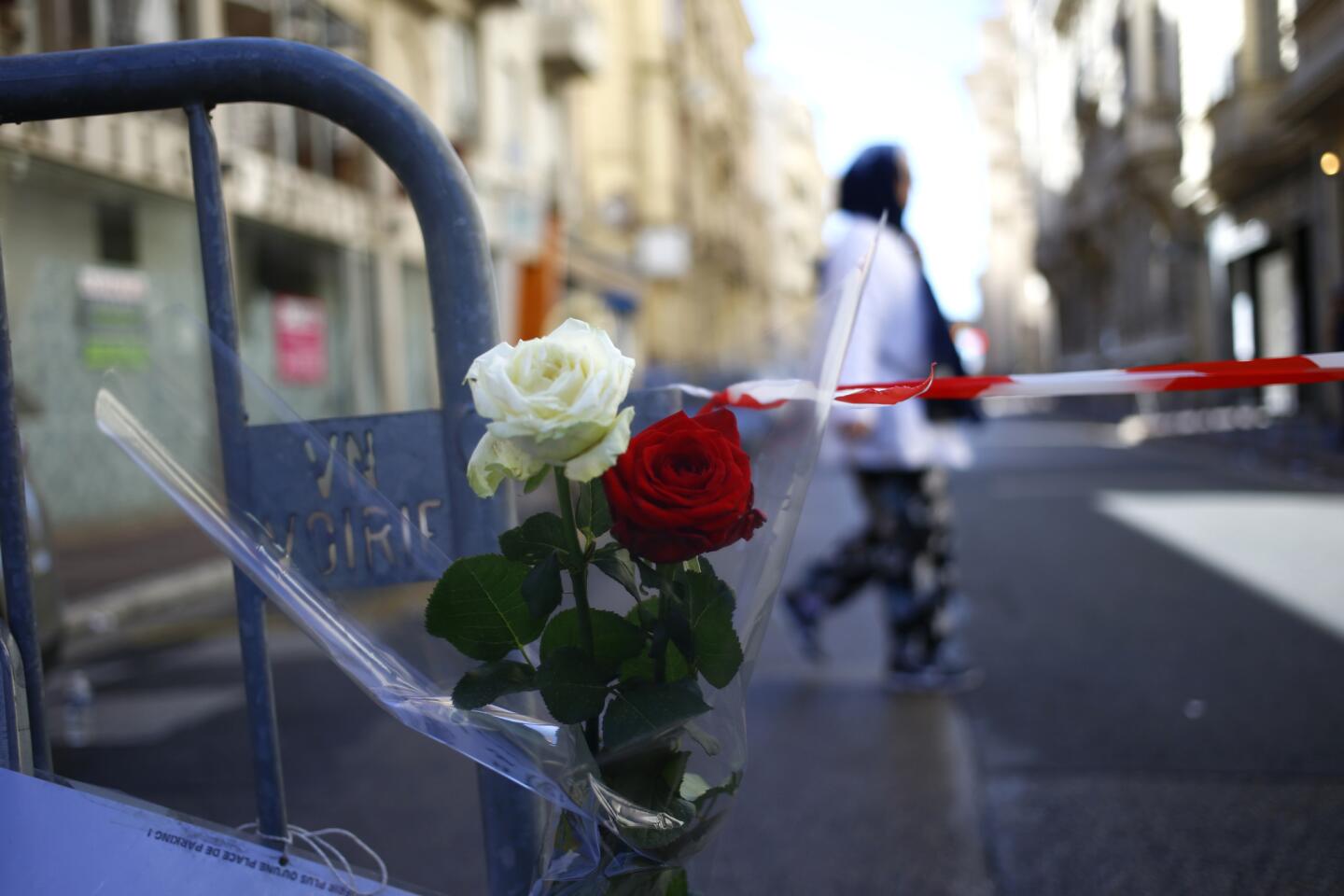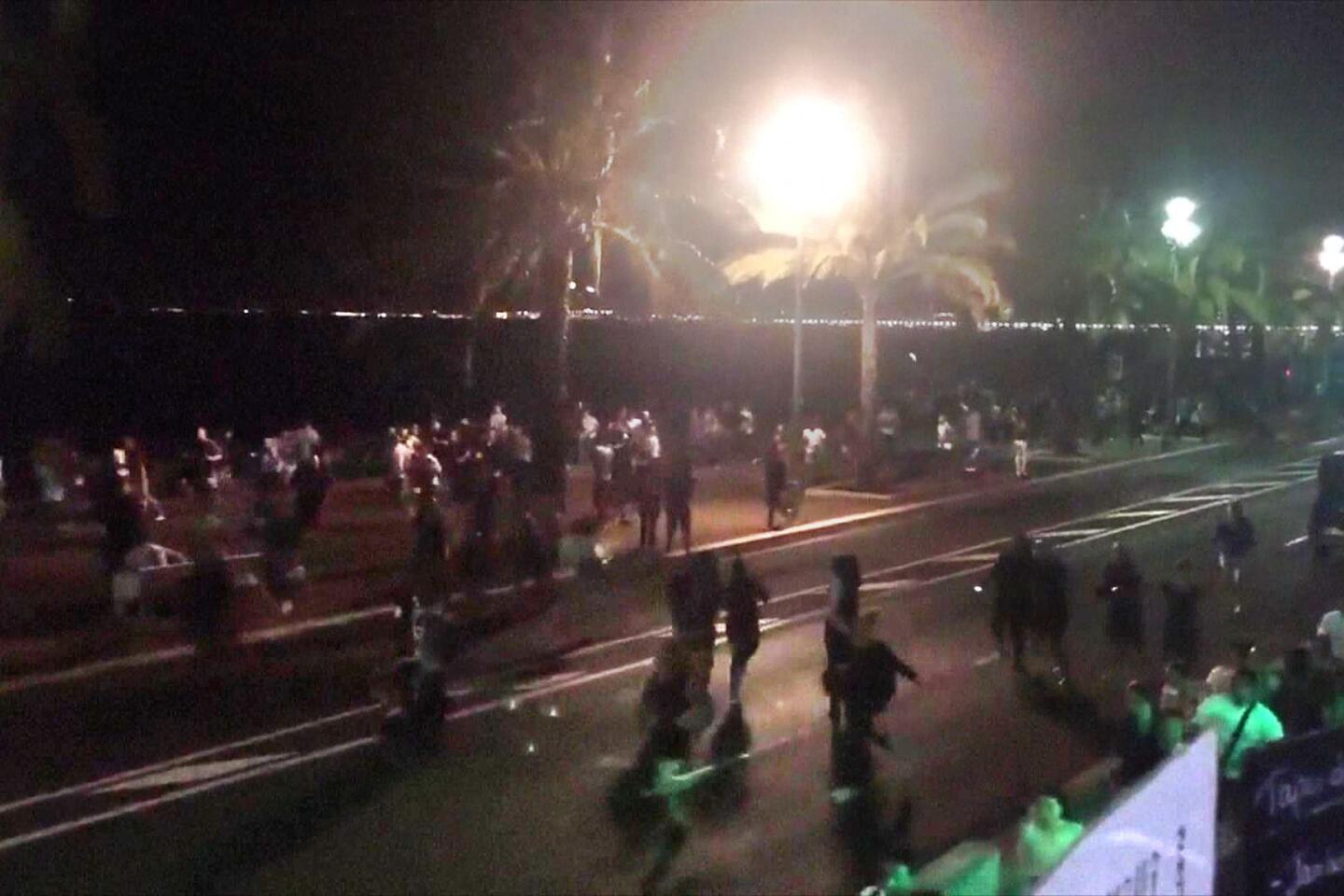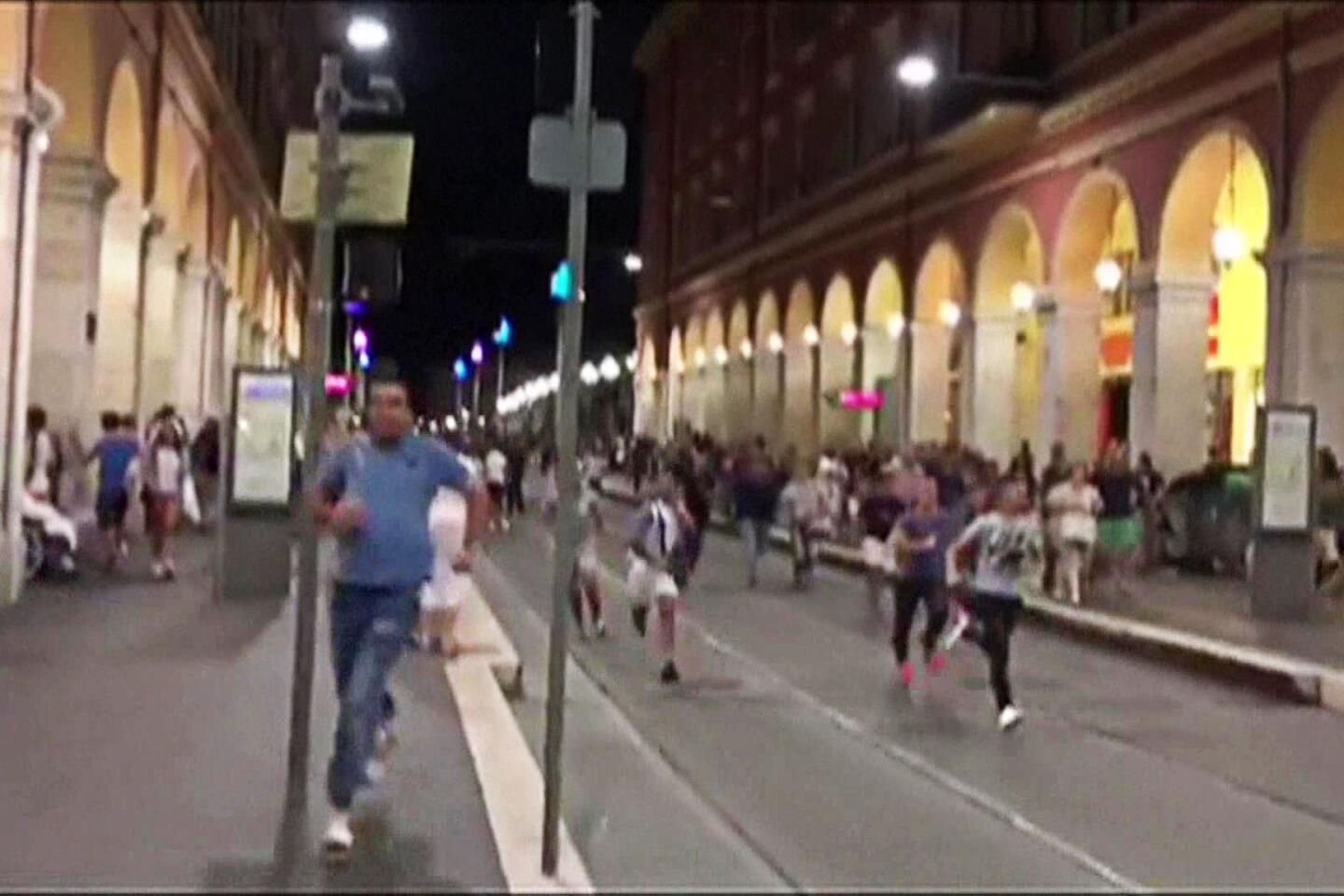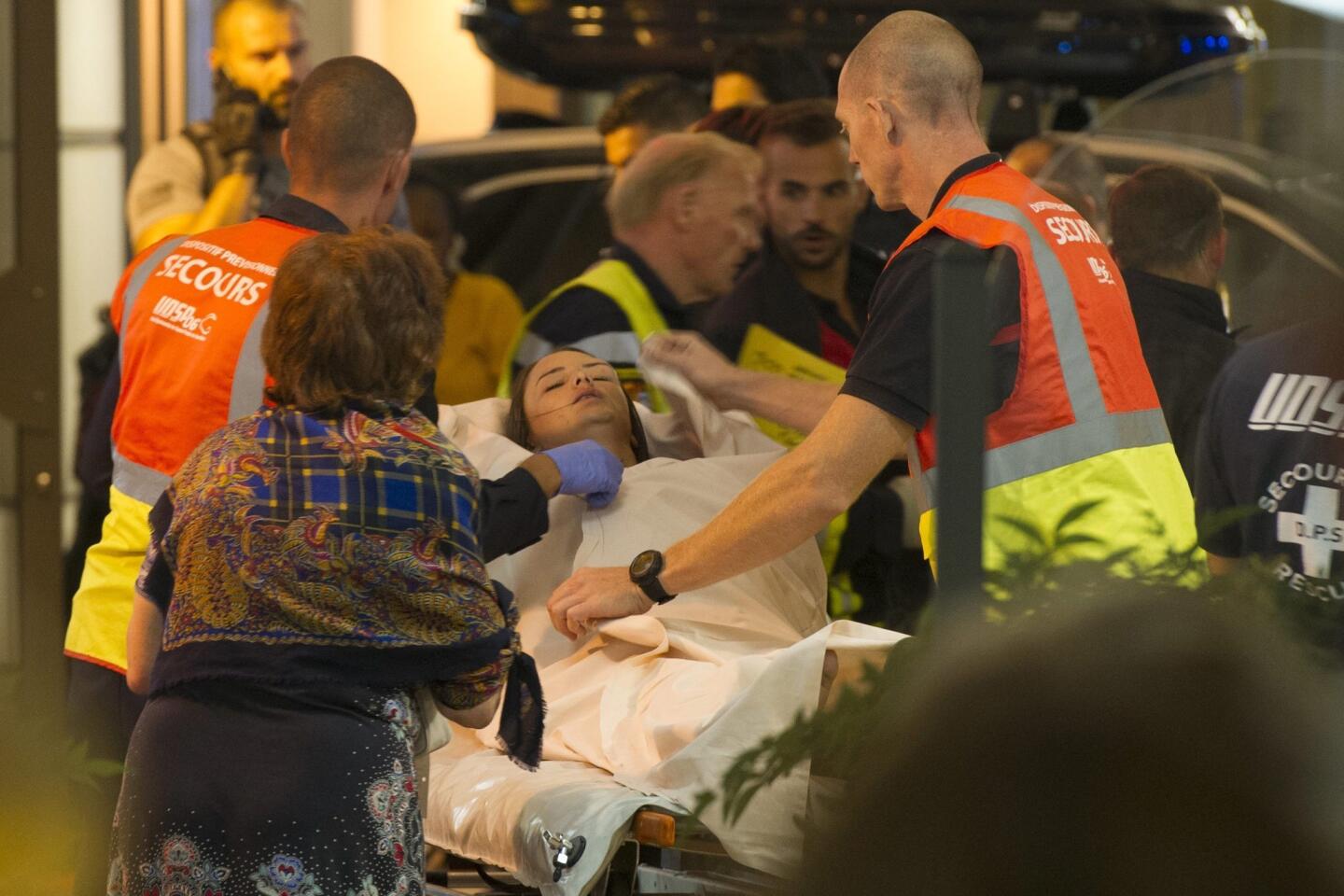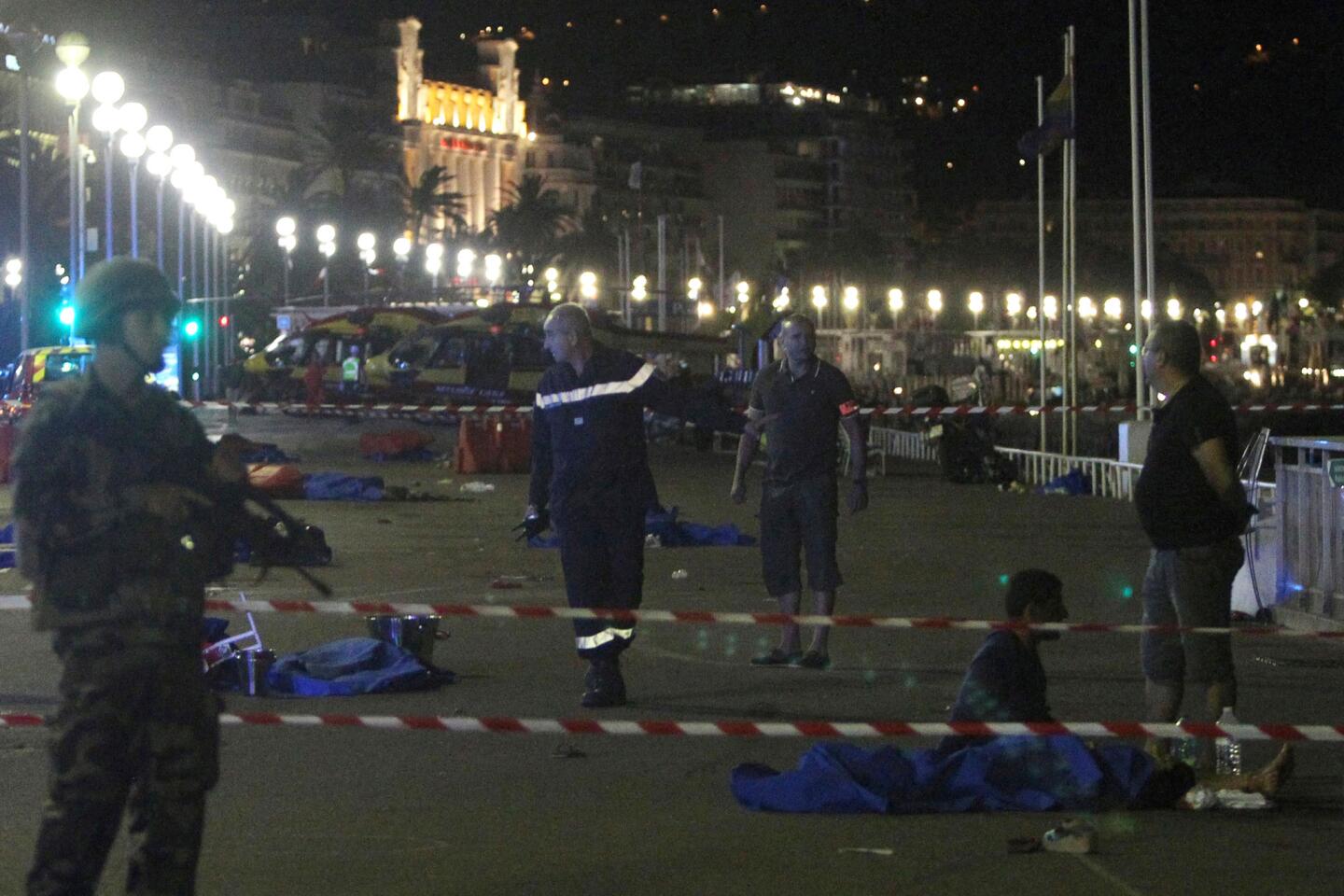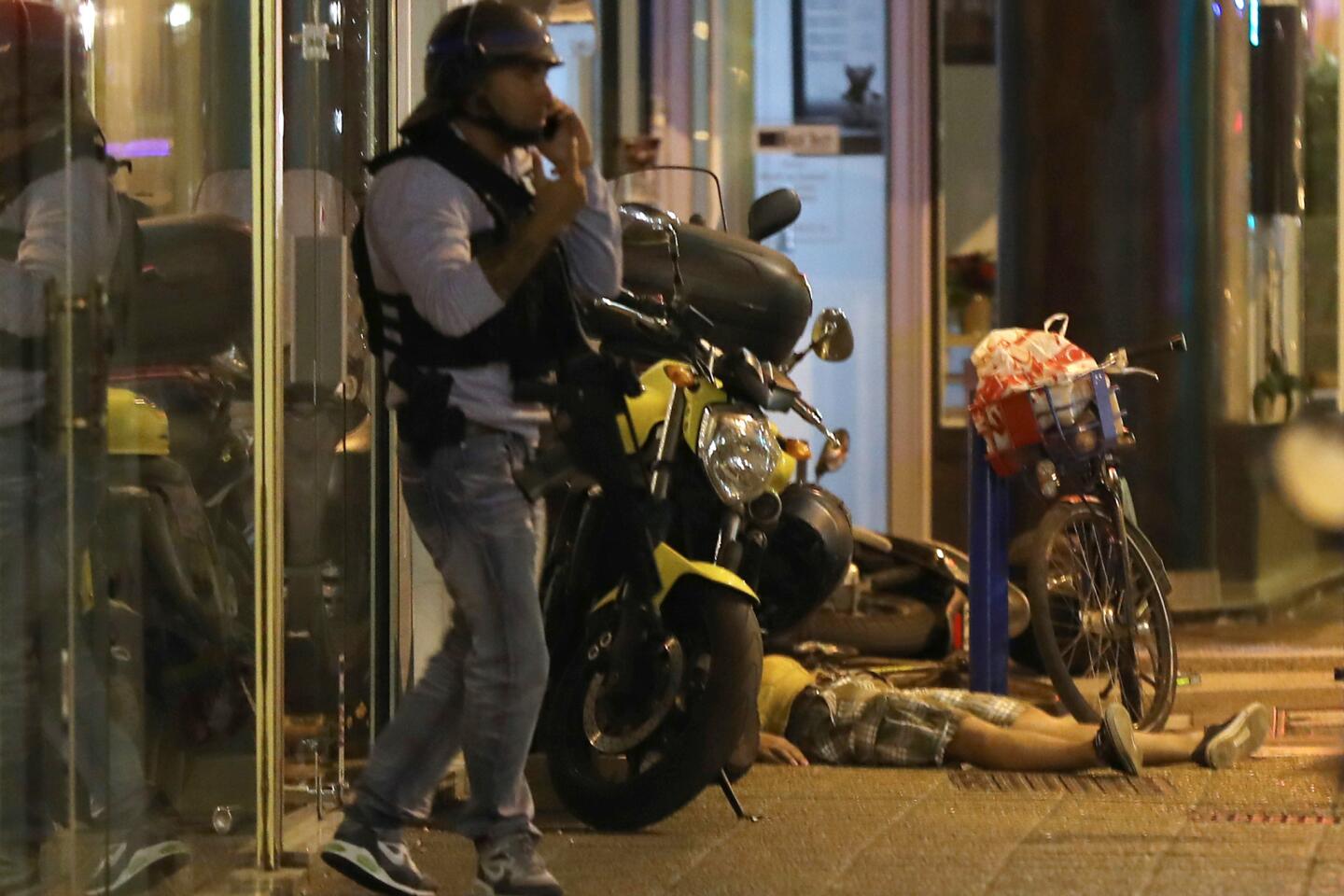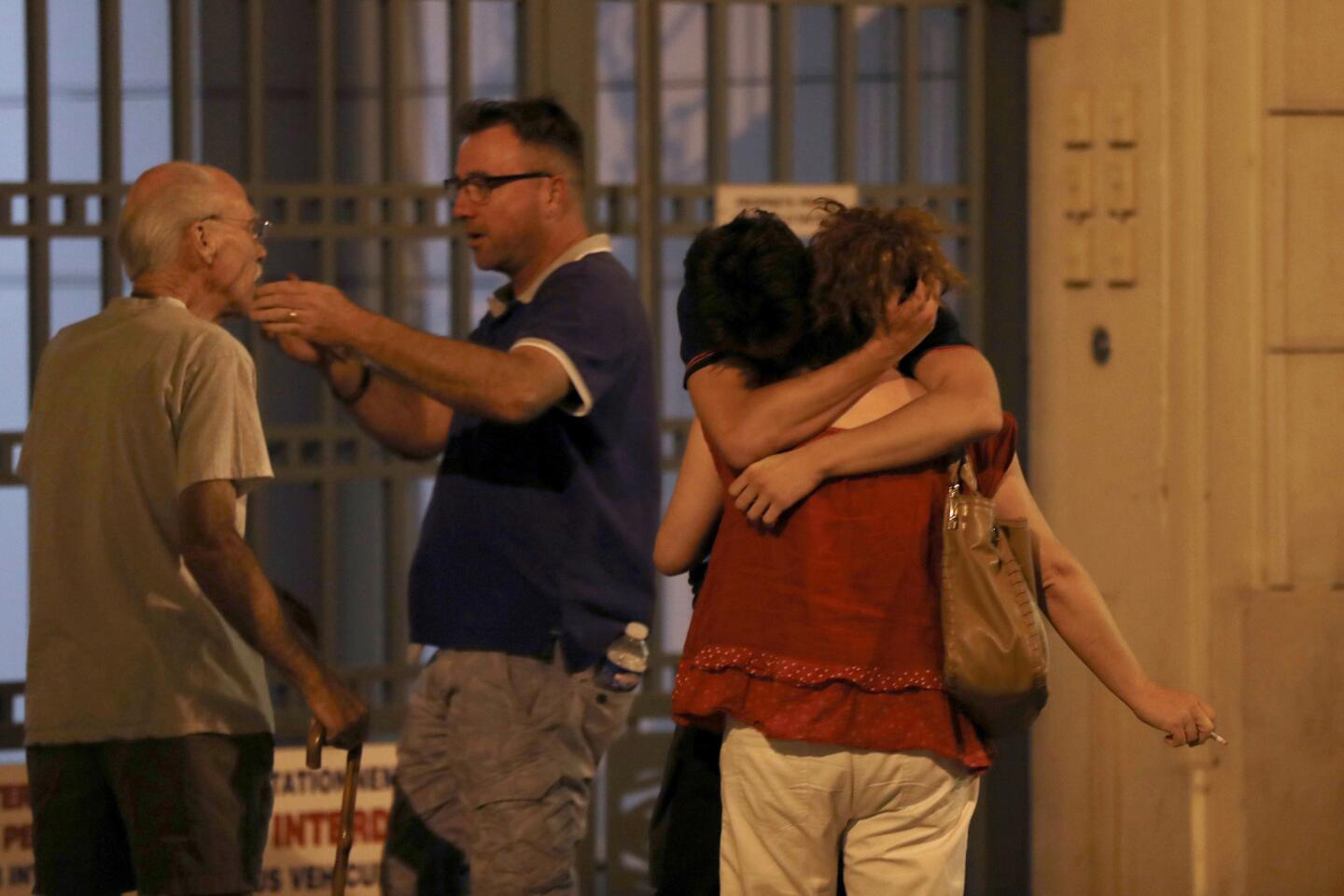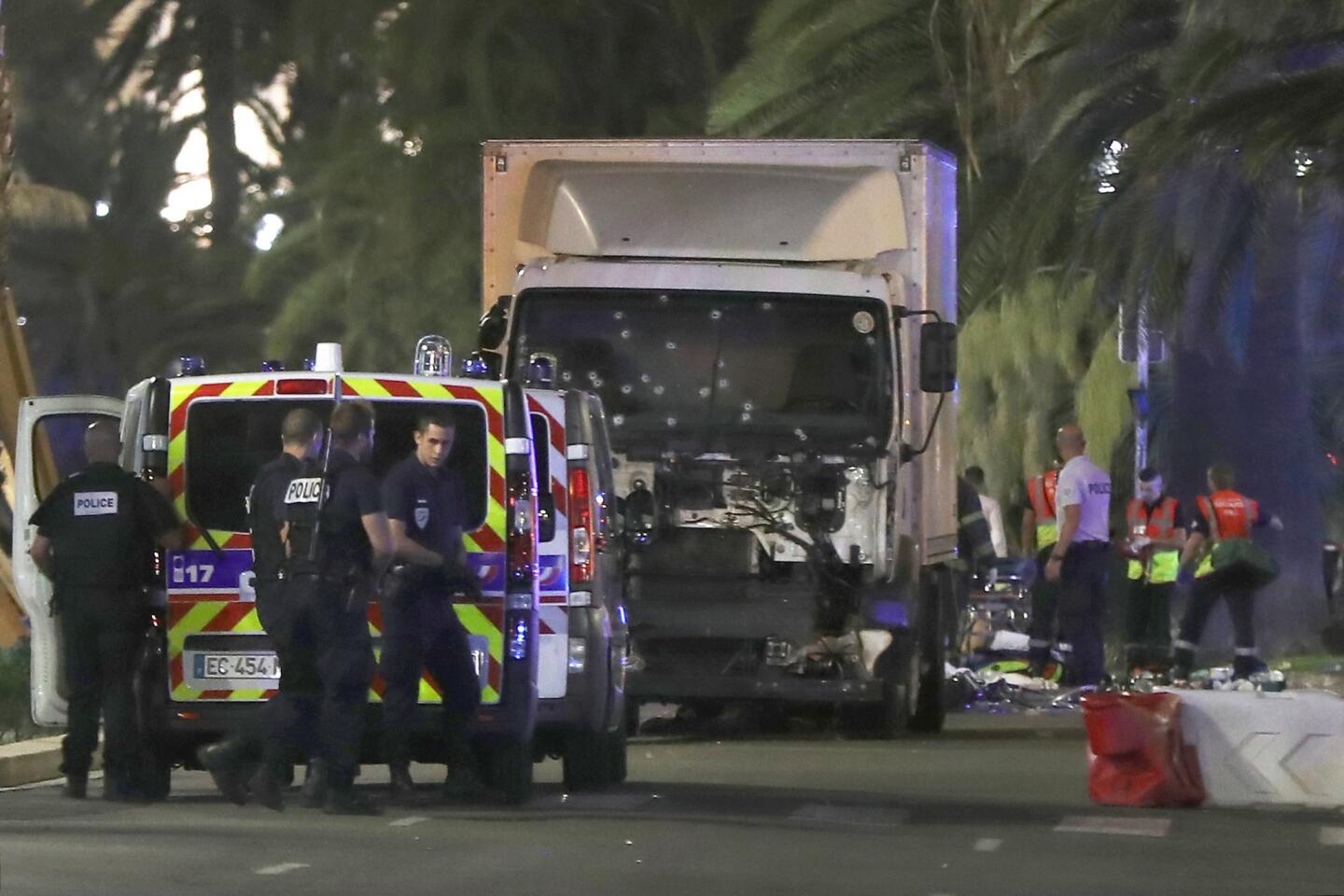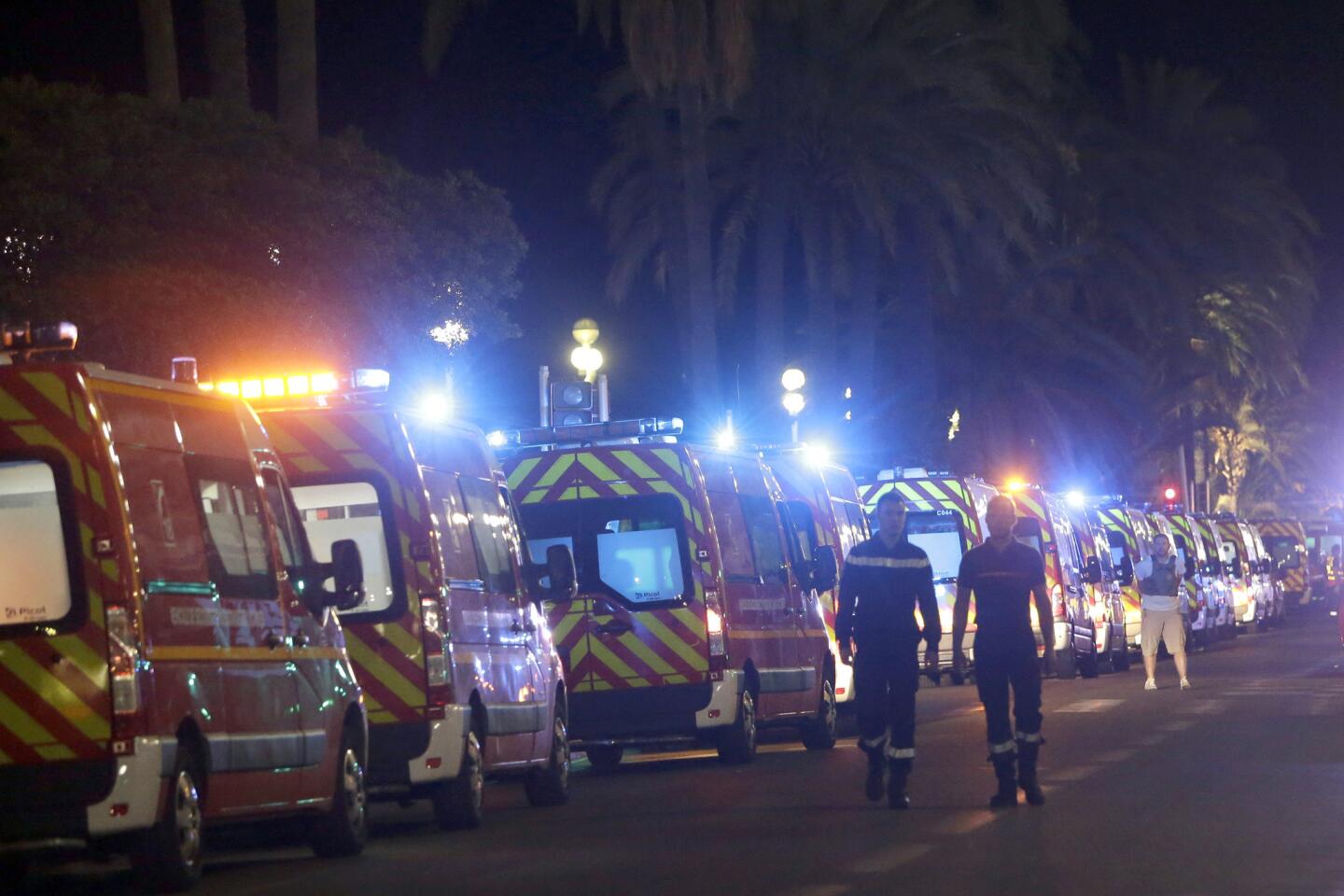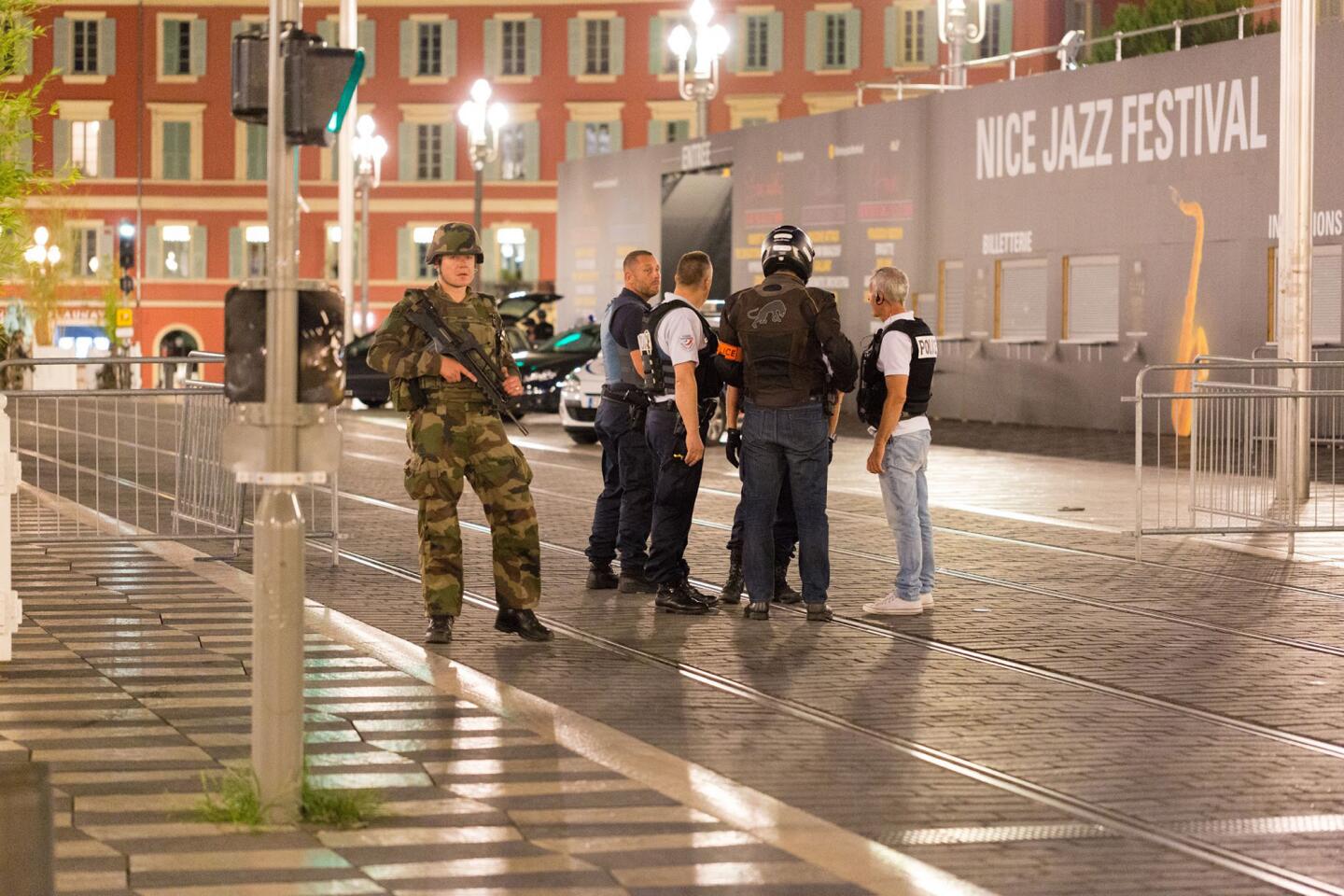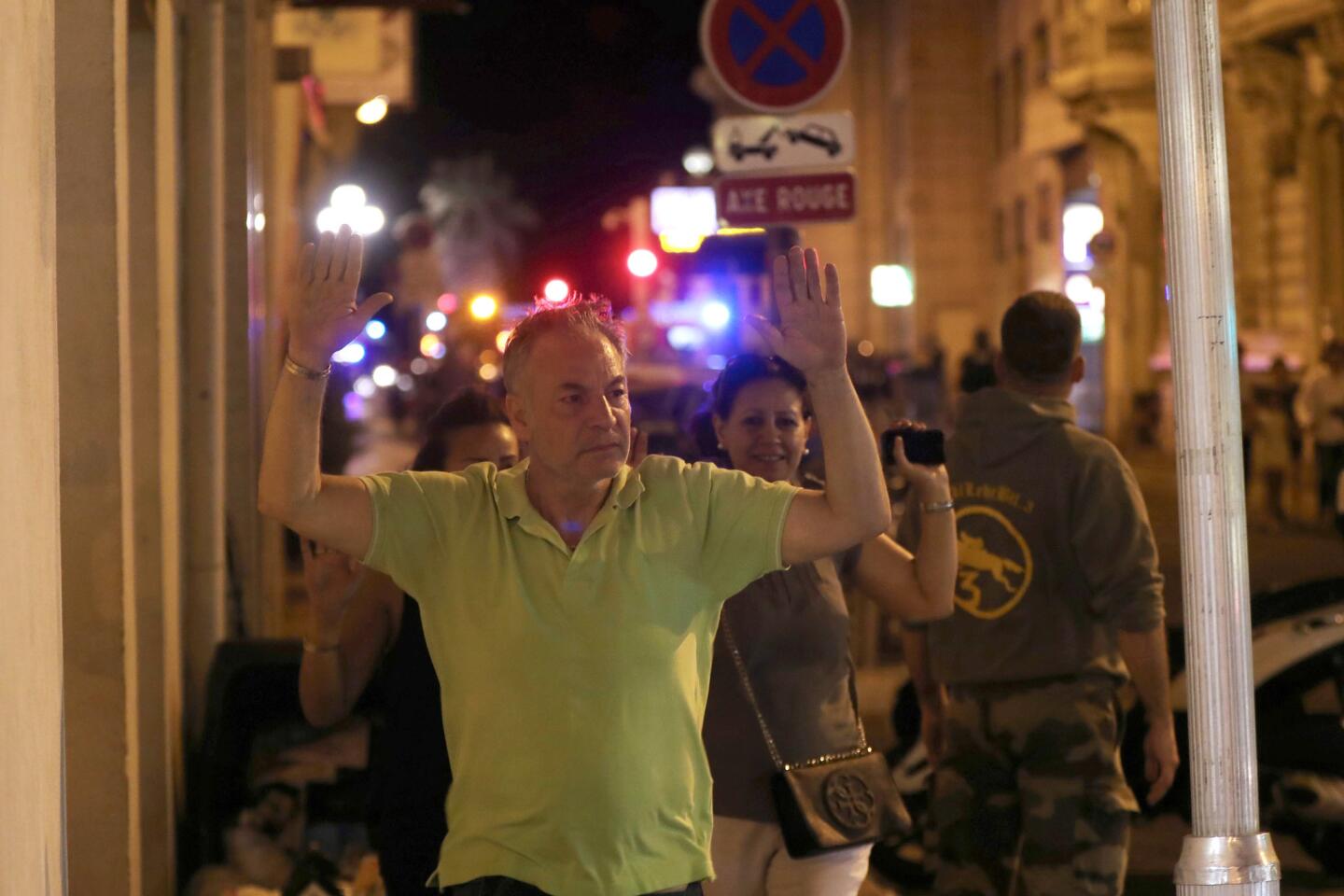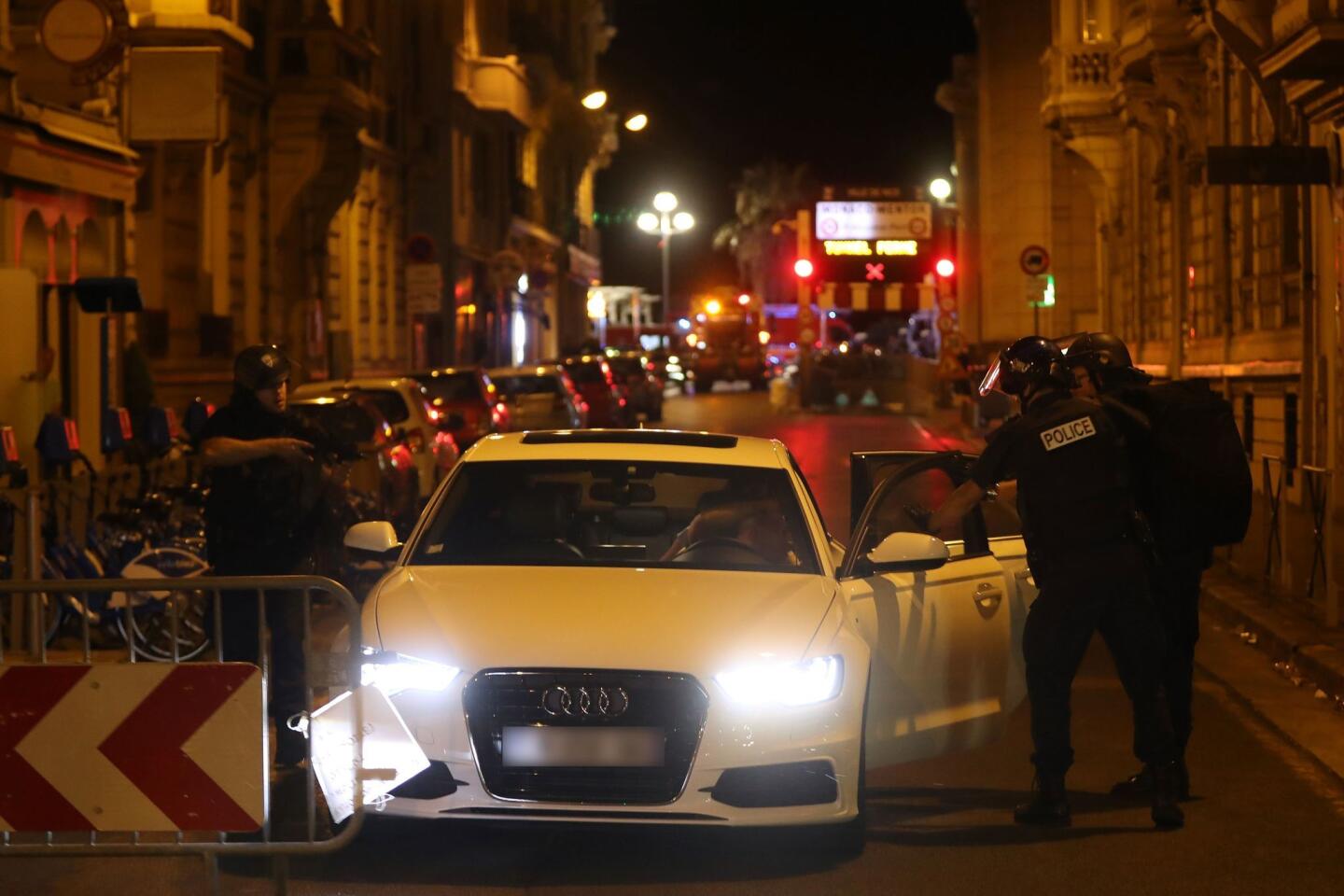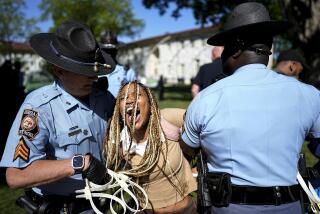Truck rampage in Nice raises painful questions: How many terror attacks can France withstand?
- Share via
NICE, France — As prayerful chants echoed through this Riviera resort city’s cathedral, France plunged Friday into an achingly familiar ritual of grief and recrimination after a truck-borne attacker plowed a path of carnage through a holiday crowd, killing at least 84 people and injuring more than 200.
The third major terrorist attack on French soil in 19 months raised painful new questions — about the security services’ ability to defend against weapons as mundane as a delivery truck, about the integration of the country’s large and often downtrodden North African population, and the sense that not only Nice but an entire way of life had again come under siege.
Authorities said an eight-month-old state of emergency would be extended, and announced plans to deploy thousands of police reservists to counter threats.
A special anti-terrorism unit was spearheading the investigation into the truck rampage late Thursday on the city’s crowded seaside Promenade des Anglais, which left a trail of crumpled bodies, bloodstained shoes and clothing and the detritus of what had been a joyous celebration of France’s national holiday, Bastille Day.
Reflecting the city’s status as both tourist magnet and melting pot, the dead and injured were of many nationalities, and online appeals proliferated as people from across Europe and around the globe searched for missing loved ones.
The State Department said two Americans were killed, and relatives in Texas identified them as 51-year-old Sean Copeland and his son Brodie, 11. An American student from UC Berkeley was reported to be unaccounted for.
Prosecutor Francois Molins, speaking at a news conference, said fingerprints had identified the slain driver-assailant as a deliveryman named Mohamed Lahouaiej Bouhlel, a 31-year-old Tunisian émigré with permission to live in France.
He said it was still unknown whether Bouhlel, a father of young children who was separated from his wife, had acted in concert with accomplices, shown any signs of radicalization, or had links to any jihadist group.
French television showed footage of investigators leaving the modest apartment where Bouhlel had previously lived, carrying bags of forensic evidence, and authorities said associates and relatives including his estranged wife were being questioned as part of the effort to ascertain whether he acted alone.
With condolences pouring in from around the world – President Obama called the assault “tragic and appalling” – France was set to observe three days of official mourning. President Francois Hollande and Prime Minister Manuel Valls flew to Nice in a show of determined solidarity in the face of the assault, eight months after devastating strikes in Paris.
“We are facing a long battle,” a haggard-looking Hollande said in a televised mid-afternoon statement from the stricken city, in which he hailed security forces who, in a now-familiar pattern, rushed to respond to the attack. Accounts of wrenching heroism emerged Friday of police and others trying desperately, and at grave risk, to stop the truck’s fatal trajectory.
But in a sign of growing public anger over the numbingly repetitive attacks, Hollande was booed and heckled by some onlookers, and – as in U.S. politics – the security issue swiftly took on sharpening political overtones. Analysts suggested the series of attacks over the past two years, with a death toll surpassing 200, could leave the French president vulnerable to ouster.
“There is rhetoric coming from the right, the extreme right and also the extreme left that in Hollande’s duty to defend the country, there was a complete breakdown in intelligence,” said Thomas Guenole, a French political expert who teaches at the Paris Institute of Political Studies, commonly referred to as Sciences Po. “For Hollande, the question is, how will he survive politically? I think he’s a goner.”
Frustration mounted, as well, over a sense of official impotence in foiling attacks.
“How is it possible, when the Promenade des Anglais was closed off, that this vehicle could access it?” asked Christian Estrosi, a former mayor of Nice and president of the regional council. “How many national police were deployed? What means were used, when our country is still in a state of emergency, to avoid this?”
Authorities were poring over CCTV footage, tracing the movements of the commercial-sized white truck used in the attack. The prosecutor said the vehicle had been rented on Monday on the outskirts of Nice and not returned on Wednesday as scheduled.
Rejoicing erupted on online networks associated with extremist groups, although even many hours after the attack, no claim of responsibility had been issued. Suggesting a degree of exaggerated bravado on the part of the attacker, most of the weapons found in the truck were nonfunctioning or replicas, authorities said, though there was a working automatic pistol and ammunition clip in the cargo bay, and the attacker was said to have exchanged fire with police.
The militant group Islamic State for months has issued propaganda videos urging lone-wolf attackers to use any means at hand, however low-tech, to stage attacks against a variety of Western targets. One such video disseminated online in mid-April included the chilling exhortation: “Fill your car with gas. My brother, hurry up! Your neighbor is a kafir (unbeliever.)”
There was no mistaking the heavy-handed symbolism of the attack, staged on a cherished holiday commemorating liberty, and targeting late-night, midsummer revelers watching the offshore fireworks display from Nice’s palm-fringed, sea-hugging Promenade des Anglais.
World leaders swiftly expressed sympathy – and renewed determination to confront terrorist threats wherever they originated. In a variety of venues, there were moments of silence and flags flown at half-staff.
In Nice, incongruously, some of the rhythms of tourist-city life went on, with waiters setting up tables at the city’s outdoor cafes. In a token of the jittery atmosphere, an unattended-bag scare briefly emptied the terminal at Nice’s airport, but it reopened soon after.
Still dazed and horrified, witnesses recounted an attack that began with terrifying suddenness.
Julie Aubin, a New Yorker in Nice for a business trip, was relaxing and watching the fireworks from a hotel rooftop – and then was sickened by what she saw occurring below.
“I live in New York; I know what gunshots sound like, and they were definitely gunshots – then we saw people running,” she said. “It’s hard to describe how I felt when I realized what was going on – disgusted, shocked, scared.”
King reported from Washington, and special correspondent Harvey reported from Nice. Special correspondent Nabih Bulos in Amman, Jordan, and Times staff writers Tracy Wilkinson in Washington, David Ng and Alexandra Zavis in Los Angeles, and Molly Hennessy-Fiske in Houston contributed to this report.
ALSO
Here’s what we know about the truck attack in Nice
Diary of Terror: The terror attacks you haven’t heard about
UPDATES:
2:25 p.m.: The article was updated with additional background and analysis.
10:20 a.m.: The article was updated with an additional witness interview.
9:20 a.m.: This article was updated with additional information on the suspect and the investigation.
8:38 a.m.: This article has been updated with identification of the suspect and comments from Secretary of State John F. Kerry.
This article was originally published at 6:50 a.m.
More to Read
Sign up for Essential California
The most important California stories and recommendations in your inbox every morning.
You may occasionally receive promotional content from the Los Angeles Times.

